Cinnamomum cassia Presl: A Review of Its Traditional Uses, Phytochemistry, Pharmacology and Toxicology
Abstract
1. Introduction
2. Traditional Usages
3. Phytochemistry
3.1. Terpenoids
3.2. Phenylpropanoids
3.3. Glycosides
3.4. Lignans
3.5. Lactones
3.6. Other Compounds
4. Pharmacology
4.1. Anti-Tumor Effects
4.2. Anti-Inflammatory and Analgesic Effects
4.3. Anti-diabetic and Anti-obesity Effects
4.4. Antibacterial and Antiviral Effects
4.5. Cardiovascular Protective Effects
4.6. Cytoprotective Effects
4.7. Neuroprotective Effects
4.8. Immunoregulation Effects
4.9. Anti-Tyrosinase Activity
4.10. Other Pharmacological Effects
4.11. Summary of Pharmacologic Effects
5. Toxicity
6. Conclusions and Future Perspectives
Author Contributions
Funding
Conflicts of Interest
Abbreviations
| HUVECs | human umbilical vein endothelial cells |
| WEC | water extracts of C. cassia |
| EEC | ethanol extracts of C. cassia |
| EC | extracts of C. cassia |
| EBC | extracts of barks of C. cassia |
| ETC | extracts of twigs of C. cassia |
| WEBC | water extracts of barks of C. cassia |
| EEBC | ethanol extracts of barks of C. cassia |
| MEBC | methanol extracts of barks of C. cassia |
| WETC | water extracts of twigs of C. cassia |
| EETC | ethanol extracts of twigs of C. cassia |
| EOBC | essential oil of barks of C. cassia |
| EOTC | essential oil of twigs of C. cassia |
| EOC | essential oil of C. cassia |
| EOLC | essential oil of leaves of C. cassia |
| HEBC | hexane extracts of barks of C. cassia |
| EAEBC | ethyl acetate extracts of barks of C. cassia |
| AEBC | acetone extract of barks of C. cassia |
| CcAgNPS | C. cassia silver nanoparticles |
| CP | C. cassia powder |
| MEC | methanol extracts of C. cassia |
References
- Wang, Y.H.; Avula, B.; Nanayakkara, N.P.D.; Zhao, J.P.; Khan, I.A. Cassia Cinnamon as a Source of Coumarin in Cinnamon-Flavored Food and Food Supplements in the United States. J. Agric. Food Chem. 2013, 61, 4470–4476. [Google Scholar] [CrossRef] [PubMed]
- Chinese Pharmacopoeia Commission. Pharmacopoeia of the People’s Republic of China Part I; People’s Medical Publishing House: Beijing, China, 1963; p. 107. (In Chinese) [Google Scholar]
- Kwon, K.B.; Kim, E.K.; Jeong, E.S.; Lee, Y.H.; Lee, Y.R.; Park, J.W.; Ryu, D.G.; Park, B.H. Cortex cinnamomi extract prevents streptozotocin- and cytokine-induced β-cell damage by inhibiting NF-κB. World J. Gastroenterol. 2006, 12, 4331–4337. [Google Scholar] [CrossRef] [PubMed]
- Hong, J.W.; Yang, G.E.; Kim, Y.B.; Eom, S.H.; Lew, J.H.; Kang, H. Anti-inflammatory activity of cinnamon water extract in vivo and in vitro LPS-induced models. BMC Complement. Altern. Med. 2012, 12, 237. [Google Scholar] [CrossRef] [PubMed]
- Ji, H.Y.; Zeng, F.X.; Zhu, R.X.; Zheng, Z.H. Exploration about the Clinical Application and Dosage of Cinnamon. Jilin J. Tradit. Chin. Med. 2019, 39, 317–320. [Google Scholar]
- Lin, H.Q.; Zhou, B.S.; Tan, J.; Wang, H.; Wu, F.L.; Liu, J.P.; Li, P.Y. Research Progress on Chemical Constituents, Pharmacological Activity and Clinical Application of Cinnamomi Cortex. Spec. Wild Econ. Anim. Plant Res. 2018, 40, 65–69. [Google Scholar]
- Pharmacopoeia Committee of the Ministry of Health. Drug Specifications Promulgated by the Ministry of Public Health, PR China. The Preparation of Traditional Chinese Drug, Vol. 1; Ministry of Health, PRC: Beijing, China, 1990; p. 160. (In Chinese)
- Pharmacopoeia Committee of the Ministry of Health. Pharmaceutical Standards of the Ministry of Health (Tibetan Pharmaceutical Branch); People’s Health Publishing House: Beijing, China, 1964; p. 8377. (In Chinese) [Google Scholar]
- Pharmacopoeia Committee of the Ministry of Health. Drug Specifications Promulgated by the Ministry of Public Health, PR China. The Preparation of Traditional Chinese Drug, Vol. 5; Ministry of Health, PRC: Beijing, China, 1993; p. 2. (In Chinese)
- Chinese Pharmacopoeia Commission. Pharmacopoeia of the People’s Republic of China Part I; People’s Medical Publishing House: Beijing, China, 2015; p. 1332. (In Chinese) [Google Scholar]
- State Drug Administration. National Standards for Chinese Patent Medicine of the State Drug Administration (Nei Ke Pi Wei Branch); People’s Medical Publishing House: Beijing, China, 2002; p. 385. (In Chinese) [Google Scholar]
- Chinese Pharmacopoeia Commission. Pharmacopoeia of the People’s Republic of China Part I; People’s Medical Publishing House: Beijing, China, 2015; p. 453. (In Chinese) [Google Scholar]
- Chinese Pharmacopoeia Commission. Pharmacopoeia of the People’s Republic of China Part I; People’s Medical Publishing House: Beijing, China, 2015; p. 617. (In Chinese) [Google Scholar]
- Chinese Pharmacopoeia Commission. Pharmacopoeia of the People’s Republic of China Part I; People’s Medical Publishing House: Beijing, China, 2015; p. 614. (In Chinese) [Google Scholar]
- Chinese Pharmacopoeia Commission. Pharmacopoeia of the People’s Republic of China Part I; People’s Medical Publishing House: Beijing, China, 2015; p. 844. (In Chinese) [Google Scholar]
- State Pharmacopoeia Commission. National Drug Standards for New Drug Correction, Vol. 87; China Pharmaceutical Science and Technology Publishing House: Beijing, China, 2011; p. 4. (In Chinese) [Google Scholar]
- State Drug Administration. National Standards for Chinese Patent Medicine of the State Drug Administration (Nei Ke Pi Wei Branch); People’s Medical Publishing House: Beijing, China, 2002; p. 496. (In Chinese) [Google Scholar]
- State Drug Administration. National Standards for Chinese Patent Medicine of the State Drug Administration (Nei Ke Xin Xi Branch); People’s Medical Publishing House: Beijing, China, 2002; p. 91. (In Chinese) [Google Scholar]
- State Pharmacopoeia Commission. National Drug Standards for New Drug Correction, Vol. 52; China Pharmaceutical Science and Technology Publishing House: Beijing, China, 2008; p. 40. (In Chinese) [Google Scholar]
- Pharmacopoeia Committee of the Ministry of Health. Drug Specifications Promulgated by the Ministry of Public Health, PR China. The Preparation of Traditional Chinese Drug, Vol. 12; Ministry of Health, PRC: Beijing, China, 1997; p. 2. (In Chinese)
- Chinese Pharmacopoeia Commission. Pharmacopoeia of the People’s Republic of China Part I; People’s Medical Publishing House: Beijing, China, 2015; p. 449. (In Chinese) [Google Scholar]
- Pharmacopoeia Committee of the Ministry of Health. Drug Specifications Promulgated by the Ministry of Public Health, PR China. The Preparation of Traditional Chinese Drug, Vol. 1; Ministry of Health, PRC: Beijing, China, 1990; p. 101. (In Chinese)
- Chinese Pharmacopoeia Commission. Pharmacopoeia of the People’s Republic of China Part I; People’s Medical Publishing House: Beijing, China, 2015; p. 1061. (In Chinese) [Google Scholar]
- Chinese Pharmacopoeia Commission. Pharmacopoeia of the People’s Republic of China Part I; People’s Medical Publishing House: Beijing, China, 2015; p. 1228. (In Chinese) [Google Scholar]
- State Pharmacopoeia Commission. National Drug Standards for New Drug Correction, Vol. 52; China Pharmaceutical Science and Technology Publishing House: Beijing, China, 2006; p. 29. (In Chinese) [Google Scholar]
- State Pharmacopoeia Commission. National Drug Standards for New Drug Correction, Vol. 64; China Pharmaceutical Science and Technology Publishing House: Beijing, China, 2008; p. 27. (In Chinese) [Google Scholar]
- Pharmacopoeia Committee of the Ministry of Healt. Drug Specifications Promulgated by the Ministry of Public Health, PR China. The Preparation of Traditional Chinese Drug, Vol. 18; Ministry of Health, PRC: Beijing, China, 1998; p. 54. (In Chinese)
- Pharmacopoeia Committee of the Ministry of Health. Drug Specifications Promulgated by the Ministry of Public Health, PR China. The Preparation of Traditional Chinese Drug, Vol. 15; Ministry of Health, PRC: Beijing, China, 1997; p. 43. (In Chinese)
- Chinese Pharmacopoeia Commission. Pharmacopoeia of the People’s Republic of China Part I; People’s Medical Publishing House: Beijing, China, 2015; p. 767. (In Chinese) [Google Scholar]
- State Pharmacopoeia Commission. National Drug Standards for New Drug Correction, Vol. 32; China Pharmaceutical Science and Technology Publishing House: Beijing, China, 2003; p. 10. (In Chinese) [Google Scholar]
- Pharmacopoeia Committee of the Ministry of Health. Drug Specifications Promulgated by the Ministry of Public Health, PR China. The Preparation of Traditional Chinese Drug, Vol. 8; Ministry of Health, PRC: Beijing, China, 1993; p. 7. (In Chinese)
- Chinese Pharmacopoeia Commission. Pharmacopoeia of the People’s Republic of China Part I; People’s Medical Publishing House: Beijing, China, 2015; p. 795. (In Chinese) [Google Scholar]
- Rao, Z.L.; Xu, F.; Wen, T.Q.; Wang, F.; Sang, W.T.; Zeng, N. Protective effects of essential oils from Rimulus cinnamon on endotoxin poisoning mice. Biomed. Pharmacother. 2018, 101, 304–310. [Google Scholar] [CrossRef] [PubMed]
- Pannee, C.; Chandhanee, I.; Wacharee, L. Anti-inflammatory effects of essential oil from the leaves of Cinnamomum cassia and cinnamaldehyde on lipopolysaccharide-stimulated J774A.1 cells. J. Adv. Pharm. Technol. Res. 2014, 5, 164–170. [Google Scholar] [CrossRef]
- Xiong, Y.K.; Liu, X.L.; Mu, Z.J.; Yuan, E.; Sun, M.S.; You, Q.T.; Liu, Z.Y. Differences of Chemical Constituents of Volatile Oil from Cinnamomum before and after Drying and Comparison of Anti-Drug Resistant Bacteria Activities. Res. Explor. Lab. 2018, 37, 56–59. [Google Scholar]
- Li, Y.Q.; Kong, D.X.; Wu, H. Analysis and evaluation of essential oil components of cinnamon barks using GC-MS and FTIR spectroscopy. Ind. Crop. Prod. 2013, 41, 269–278. [Google Scholar] [CrossRef]
- Yan, Y.M.; Fang, P.; Yang, M.T.; Li, N.; Lu, Q.; Cheng, Y.X. Anti-diabetic nephropathy compounds from Cinnamomum cassia. J. Ethnopharmacol. 2015, 165, 141–147. [Google Scholar] [CrossRef]
- Pham, V.C.; Nguyen, T.T.A.; Vu, T.O.; Gao, T.Q.; Min, B.S.; Kim, J.A. Five new diterpenoids from the barks of Cinnamomum cassia (L.) J. Presl. Phytochem. Lett. 2019, 32, 23–28. [Google Scholar] [CrossRef]
- Zeng, J.F.; Xue, Y.B.; Shu, P.H.; Qian, H.Q.; Sa, R.J.; Xiang, M.; Li, X.N.; Luo, Z.W.; Yao, G.M.; Zhang, Y.H. Diterpenoids with Immunosuppressive Activities from Cinnamomum cassia. J. Nat. Prod. 2014, 77, 1948–1954. [Google Scholar] [CrossRef] [PubMed]
- Chang, C.T.; Chang, W.L.; Hsu, J.C.; Shih, Y.; Chou, S.T. Chemical composition and tyrosinase inhibitory activity of Cinnamomum cassia essential oil. Bot. Stud. 2013, 54, 10. [Google Scholar] [CrossRef] [PubMed]
- Chen, P.Y.; Yu, J.W.; Lu, F.L.; Lin, M.C.; Cheng, H.F. Differentiating parts of Cinnamomum cassia using LC-qTOF-MS in conjunction with principal component analysis. Biomed. Chromatogr. 2016, 30, 1449–1457. [Google Scholar] [CrossRef] [PubMed]
- Ngoc, T.M.; Khoi, N.M.; Ha, D.T.; Nhiem, N.X.; Tai, B.H.; Van Don, D.; Van Luong, H.; Son, D.C.; Bae, K. Xanthine oxidase inhibitory activity of constituents of Cinnamomum cassia twigs. Bioorg. Med. Chem. Lett. 2012, 22, 4625–4628. [Google Scholar] [CrossRef] [PubMed]
- Zhou, W.W.; Liang, Z.T.; Li, P.; Zhao, Z.Z.; Chen, J. Tissue-specific chemical profiling and quantitative analysis of bioactive components of Cinnamomum cassia by combining laser-microdissection with UPLC-Q/TOF-MS. Chem. Cent. J. 2018, 12, 71. [Google Scholar] [CrossRef]
- Liu, X.; Fu, J.; Yao, X.J.; Yang, J.; Liu, L.; Xie, T.G.; Jiang, P.C.; Jiang, Z.H.; Zhu, G.Y. Phenolic Constituents Isolated from the Twigs of Cinnamomum cassia and Their Potential Neuroprotective Effects. J. Nat. Prod. 2018, 81, 1333–1342. [Google Scholar] [CrossRef]
- Zeng, J.F.; Zhu, H.C.; Lu, J.W.; Hu, L.Z.; Song, J.C.; Zhang, Y.H. Two new geranylphenylacetate glycosides from the barks of Cinnamomum cassia. Nat. Prod. Res. 2017, 31, 1812–1818. [Google Scholar] [CrossRef]
- He, S.; Zeng, K.W.; Jiang, Y.; Tu, P.F. Nitric oxide inhibitory constituents from the barks of Cinnamomum cassia. Fitoterapia 2016, 112, 153–160. [Google Scholar] [CrossRef]
- Luo, Q.; Wang, S.M.; Lu, Q.; Luo, J.; Cheng, Y.X. Identification of Compounds from the Water Soluble Extract of Cinnamomum cassia Barks and Their Inhibitory Effects against High-Glucose-Induced Mesangial Cells. Molecules 2013, 18, 10930–10943. [Google Scholar] [CrossRef]
- Zeng, J.F.; Xue, Y.B.; Lai, Y.J.; Yao, G.M.; Luo, Z.W.; Zhang, Y.H.; Zhang, J.W. A New Phenolic Glycoside from the Barks of Cinnamomum cassia. Molecules 2014, 19, 17727–17734. [Google Scholar] [CrossRef] [PubMed]
- Kim, G.J.; Lee, J.Y.; Choi, H.G.; Kim, S.Y.; Kim, E.; Shim, S.H.; Nam, J.W.; Kim, S.H.; Choi, H. Cinnamomulactone, a new butyrolactone from the twigs of Cinnamomum cassia and its inhibitory activity of matrix metalloproteinases. Arch. Pharm. Res. 2017, 40, 304–310. [Google Scholar] [CrossRef] [PubMed]
- Li, Z.L.; Cai, Z.C.; Qian, S.H.; Chen, M.H. A New Lactone from the Twigs of Cinnamomum cassia. Chem. Nat. Compd. 2017, 53, 234–236. [Google Scholar] [CrossRef]
- Kin, R.; Kato, S.; Kaneto, N.; Sakurai, H.; Hayakawa, Y.; Li, F.; Tanaka, K.; Saiki, I.; Yokoyama, S. Procyanidin C1 from Cinnamomi Cortex inhibits TGF-beta-induced epithelial-to-mesenchymal transition in the A549 lung cancer cell line. Int. J. Oncol. 2013, 43, 1901–1906. [Google Scholar] [CrossRef]
- Sun, L.; Zong, S.B.; Li, J.C.; Lv, Y.Z.; Liu, L.N.; Wang, Z.Z.; Zhou, J.; Cao, L.; Kou, J.P.; Xiao, W. The essential oil from the twigs of Cinnamomum cassia Presl alleviates pain and inflammation in mice. J. Ethnopharmacol. 2016, 194, 904–912. [Google Scholar] [CrossRef]
- Yang, X.Q.; Zheng, H.; Ye, Q.; Li, R.Y.; Chen, Y. Essential oil of cinnamon exerts anti-cancer activity against head and neck squamous cell carcinoma via attenuating epidermal growth factor receptor-tyrosine kinase. J. BUON 2015, 20, 1518–1525. [Google Scholar] [PubMed]
- Zao, D.; Sun, Y.; Chen, G. Inhibition Activity of Cinnamon Oil. J. Jilin Agric. Univ. 2013, 35, 402–405. [Google Scholar]
- Jones, P.; Altamura, S.; De Francesco, R.; Gallinari, P.; Lahm, A.; Neddermann, P.; Rowley, M.; Serafini, S.; Steinkuhler, C. Probing the elusive catalytic activity of vertebrate class IIa histone deacetylases. Bioorg. Med. Chem. Lett. 2008, 18, 1814–1819. [Google Scholar] [CrossRef]
- Hu, J.; Jing, H.; Lin, H.N. Sirtuin inhibitors as anticancer agents. Future Med. Chem. 2014, 6, 945–966. [Google Scholar] [CrossRef]
- Rettig, I.; Koeneke, E.; Trippel, F.; Mueller, W.C.; Burhenne, J.; Kopp-Schneider, A.; Fabian, J.; Schober, A.; Fernekorn, U.; von Deimling, A.; et al. Selective inhibition of HDAC8 decreases neuroblastoma growth in vitro and in vivo and enhances retinoic acid-mediated differentiation. Cell Death Dis. 2015, 6, e1657. [Google Scholar] [CrossRef]
- Patil, M.; Choudhari, A.S.; Pandita, S.; Islam, M.A.; Raina, P.; Kaul-Ghanekar, R. Cinnamaldehyde, Cinnamic Acid, and Cinnamyl Alcohol, the Bioactives of Cinnamomum cassia Exhibit HDAC8 Inhibitory Activity: An in vitro and in silico Study. Pharmacogn. Mag. 2017, 13, S645–S651. [Google Scholar] [CrossRef] [PubMed]
- Ohnuma, T.; Matsumoto, T.; Itoi, A.; Kawana, A.; Nishiyama, T.; Ogura, K.; Hiratsuka, A. Enhanced sensitivity of A549 cells to the cytotoxic action of anticancer drugs via suppression of Nrf2 by procyanidins from Cinnamomi Cortex extract. Biochem. Biophys. Res. Commun. 2011, 413, 623–629. [Google Scholar] [CrossRef] [PubMed]
- Ohnuma, T.; Anzai, E.; Suzuki, Y.; Shimoda, M.; Saito, S.; Nishiyama, T.; Ogura, K.; Hiratsuka, A. Selective antagonization of activated Nrf2 and inhibition of cancer cell proliferation by procyanidins from Cinnamomi Cortex extract. Arch. Biochem. Biophys. 2015, 585, 17–24. [Google Scholar] [CrossRef] [PubMed]
- Ohnuma, T.; Sakamoto, K.; Shinoda, A.; Takagi, C.; Ohno, S.; Nishiyama, T.; Ogura, K.; Hiratsuka, A. Procyanidins from Cinnamomi Cortex promote proteasome-independent degradation of nuclear Nrf2 through phosphorylation of insulin-like growth factor-1 receptor in A549 cells. Arch. Biochem. Biophys. 2017, 635, 66–73. [Google Scholar] [CrossRef] [PubMed]
- Lin, C.Y.; Hsieh, Y.H.; Yang, S.F.; Chu, S.C.; Chen, P.N.; Hsieh, Y.S. Cinnamomum cassia extracts reverses TGF-1-induced epithelial-mesenchymal transition in human lung adenocarcinoma cells and suppresses tumor growth in vivo. Environ. Toxicol. 2017, 32, 1878–1887. [Google Scholar] [CrossRef] [PubMed]
- Wu, H.C.; Horng, C.T.; Lee, Y.L.; Chen, P.N.; Lin, C.Y.; Liao, C.Y.; Hsieh, Y.S.; Chu, S.C. Cinnamomum Cassia Extracts Suppress Human Lung Cancer Cells Invasion by Reducing u-PA/MMP Expression through the FAK to ERK Pathways. Int. J. Med. Sci. 2018, 15, 115–123. [Google Scholar] [CrossRef]
- Lee, E.J.; Chung, T.W.; Lee, J.H.; Kim, B.S.; Kim, E.Y.; Lee, S.O.; Ha, K.T. Water-extracted branch of Cinnamomum cassia promotes lung cancer cell apoptosis by inhibiting pyruvate dehydrogenase kinase activity. J. Pharmacol. Sci. 2018, 138, 146–154. [Google Scholar] [CrossRef] [PubMed]
- Chang, W.L.; Cheng, F.C.; Wang, S.P.; Chou, S.T.; Shih, Y. Cinnamomum cassia essential oil and its major constituent cinnamaldehyde induced cell cycle arrest and apoptosis in human oral squamous cell carcinoma HSC-3 cells. Environ. Toxicol. 2017, 32, 456–468. [Google Scholar] [CrossRef]
- Yu, C.H.; Chu, S.C.; Yang, S.F.; Hsieh, Y.S.; Lee, C.Y.; Chen, P.N. Induction of apoptotic but not autophagic cell death by Cinnamomum cassia extracts on human oral cancer cells. J. Cell. Physiol. 2019, 234, 5289–5303. [Google Scholar] [CrossRef]
- Rad, S.K.; Kanthimathi, M.S.; Abd Malek, S.N.; Lee, G.S.; Looi, C.Y.; Wong, W.F. Cinnamomum cassia Suppresses Caspase-9 through Stimulation of AKT1 in MCF-7 Cells but Not in MDA-MB-231 Cells. PLoS ONE 2015, 10, e0145216. [Google Scholar] [CrossRef]
- Koppikar, S.J.; Choudhari, A.S.; Suryavanshi, S.A.; Kumari, S.; Chattopadhyay, S.; Kaul-Ghanekar, R. Aqueous Cinnamon Extract (ACE-c) from the bark of Cinnamomum cassia causes apoptosis in human cervical cancer cell line (SiHa) through loss of mitochondrial membrane potential. BMC Cancer 2010, 10, 210. [Google Scholar] [CrossRef] [PubMed]
- Liao, J.C.; Deng, J.S.; Chiu, C.S.; Hou, W.C.; Huang, S.S.; Shie, P.H.; Huang, G.J. Anti-Inflammatory Activities of Cinnamomum cassia Constituents in Vitro and in Vivo. Evid. Based. Complement. Altern. 2012, 2012, 429320. [Google Scholar] [CrossRef]
- Gunawardena, D.; Karunaweera, N.; Lee, S.; van der Kooy, F.; Harman, D.G.; Raju, R.; Bennett, L.; Gyengesi, E.; Sucher, N.J.; Munch, G. Anti-inflammatory activity of cinnamon (C-zeylanicum and C-cassia) extracts - identification of E-cinnamaldehyde and o-methoxy cinnamaldehyde as the most potent bioactive compounds. Food Funct. 2015, 6, 910–919. [Google Scholar] [CrossRef] [PubMed]
- Shin, W.Y.; Shim, D.W.; Kim, M.K.; Sun, X.; Koppula, S.; Yu, S.H.; Kim, H.B.; Kim, T.J.; Kang, T.B.; Lee, K.H. Protective effects of Cinnamomum cassia (Lamaceae) against gout and septic responses via attenuation of inflammasome activation in experimental models. J. Ethnopharmacol. 2017, 205, 173–177. [Google Scholar] [CrossRef] [PubMed]
- Sharma, H.; Chauhan, P.; Singh, S. Evaluation of the anti-arthritic activity of Cinnamomum cassia bark extract in experimental models. Integr. Med. Res. 2018, 7, 366–373. [Google Scholar] [CrossRef] [PubMed]
- Balayssac, D.; Ferrier, J.; Pereira, B.; Gillet, B.; Petorin, C.; Vein, J.; Libert, F.; Eschalier, A.; Pezet, D. Prevention of oxaliplatin-induced peripheral neuropathy by a polyamine-reduced diet-NEUROXAPOL: Protocol of a prospective, randomised, controlled, single-blind and monocentric trial. BMJ Open 2015, 5, e007479. [Google Scholar] [CrossRef] [PubMed]
- Kim, C.; Lee, J.H.; Kim, W.; Li, D.X.; Kim, Y.; Lee, K.; Kim, S.K. The Suppressive Effects of Cinnamomi Cortex and Its Phytocompound Coumarin on Oxaliplatin-Induced Neuropathic Cold Allodynia in Rats. Molecules 2016, 21, 1253. [Google Scholar] [CrossRef] [PubMed]
- Chae, H.K.; Kim, W.; Kim, S.K. Phytochemicals of Cinnamomi Cortex: Cinnamic Acid, but not Cinnamaldehyde, Attenuates Axaliplatin-Induced Cold and Mechanical Hypeisensitivity in Rats. Nutrients 2019, 11, 432. [Google Scholar] [CrossRef]
- Jiang, Q.; Zou, S.Q.; Zhou, W.H.; Yi, Z.X.; Wu, X.C.; Gong, H.F. Optimization of Extraction Technology for Total Polyphenols from Cinnamomi Cortex and Investigation of its Hypoglycemic Effect. Chin. J. Exp. Med. Formul. 2013, 19, 21–23. [Google Scholar]
- Kang, B.H.; Racicot, K.; Pilkenton, S.J.; Apostolidis, E. Evaluation of the in vitro Anti-Hyperglycemic Effect of Cinnamomum cassia Derived Phenolic Phytochemicals, via Carbohydrate Hydrolyzing Enzyme Inhibition. Plant Food Hum. Nutr. 2014, 69, 155–160. [Google Scholar] [CrossRef]
- Kumar, I.M.K.; Issac, A.; Ninan, E.; Kuttan, R.; Maliakel, B. Enhanced anti-diabetic activity of polyphenol-rich de-coumarinated extracts of Cinnamomum cassia. J. Funct. Foods 2014, 10, 54–64. [Google Scholar] [CrossRef]
- Uslu, G.A.; Gelen, V.; Uslu, H.; Ozen, H. Effects of Cinnamomum cassia extract on oxidative stress, immunoreactivity of iNOS and impaired thoracic aortic reactivity induced by type II diabetes in rats. Braz. J. Pharm. Sci. 2018, 54. [Google Scholar] [CrossRef]
- Kouame, K.; Peter, A.I.; Akang, E.N.; Moodley, R.; Naidu, E.C.; Azu, O.O. Histological and biochemical effects of Cinnamomum cassia nanoparticles in kidneys of diabetic Sprague-Dawley rats. Bosn. J. Basic Med. 2019, 19, 138–145. [Google Scholar] [CrossRef] [PubMed]
- Lee, S.G.; Siaw, J.A.; Kang, H.W. Stimulatory Effects of Cinnamon Extract (Cinnamomum cassia) during the Initiation Stage of 3T3-L1 Adipocyte Differentiation. Foods 2016, 5, 83. [Google Scholar] [CrossRef] [PubMed]
- Song, M.Y.; Kang, S.Y.; Kang, A.; Hwang, J.H.; Park, Y.K.; Jung, H.W. Cinnamomum cassia Prevents High-Fat Diet-Induced Obesity in Mice through the Increase of Muscle Energy. Am. J. Chin. Med. 2017, 45, 1017–1031. [Google Scholar] [CrossRef] [PubMed]
- Pu, Z.H.; Wang, X.Q. Study on antibacterial activity of cinnamon essential oil. J. Mianyang Norm. Univ. 2013, 32, 39–43. [Google Scholar]
- Sheng, L.N.; Zhu, M.J. Inhibitory effect of Cinnamomum cassia oil on non-O157 Shiga toxin-producing Escherichia coli. Food Control 2014, 46, 374–381. [Google Scholar] [CrossRef]
- Zhang, Y.B.; Liu, X.Y.; Wang, Y.F.; Jiang, P.P.; Quek, S. Antibacterial activity and mechanism of cinnamon essential oil against Escherichia coli and Staphylococcus aureus. Food Control 2016, 59, 282–289. [Google Scholar] [CrossRef]
- Vaillancourt, K.; LeBel, G.; Yi, L.; Grenier, D. In vitro antibacterial activity of plant essential oils against Staphylococcus hyicus and Staphylococcus aureus, the causative agents of exudative epidermitis in pigs. Arch. Microbiol. 2018, 200, 1001–1007. [Google Scholar] [CrossRef] [PubMed]
- Li, Z.X.; Li, M.; Huang, X.S.; Liang, H.M.; Li, J.L.; Huang, X.H. Study on the bacteriostatic effect of cinnamon oil on acne-inducing bacteria. J. Guangdong Pharm. Univ. 2018, 34, 719–723. [Google Scholar]
- Song, X.Q.; Sun, Y.; Zhang, Q.; Yang, X.B.; Zheng, F.; He, S.K.; Wang, Y.F. Failure of Staphylococcus aureus to Acquire Direct and Cross Tolerance after Habituation to Cinnamon Essential Oil. Microorganisms 2019, 7, 18. [Google Scholar] [CrossRef] [PubMed]
- El Atki, Y.; Aouam, I.; El Kamari, F.; Taroq, A.; Nayme, K.; Timinouni, M.; Lyoussi, B.; Abdellaoui, A. Antibacterial activity of cinnamon essential oils and their synergistic potential with antibiotics. J. Adv. Pharm. Technol. Res. 2019, 10, 63–67. [Google Scholar] [CrossRef] [PubMed]
- Fatima, M.; Zaidi, N.; Amraiz, D.; Afzal, F. In Vitro Antiviral Activity of Cinnamomum cassia and Its Nanoparticles Against H7N3 Influenza a Virus. J. Microbiol. Biotechnol. 2016, 26, 151–159. [Google Scholar] [CrossRef] [PubMed]
- Kwon, H.; Lee, J.J.; Lee, J.H.; Cho, W.K.; Gu, M.J.; Lee, K.J.; Ma, J.Y. Cinnamon and its Components Suppress Vascular Smooth Muscle Cell Proliferation by Up-Regulating Cyclin-Dependent Kinase Inhibitors. Am. J. Chin. Med. 2015, 43, 621–636. [Google Scholar] [CrossRef] [PubMed]
- Kim, E.C.; Kim, H.J.; Kim, T.J. Water extract of Cinnamomum cassia suppresses angiogenesis through inhibition of VEGF receptor 2 phosphorylation. Biosci. Biotechnol. Biochem. 2015, 79, 617–624. [Google Scholar] [CrossRef] [PubMed]
- Wei, K.Z.; Yao, P.A.; Liu, X.N.; Feng, J.H.; Xu, X.; Gao, J.P. Cardioprotective effects of Rougui (Cinnamomi Cortex) on diabetic cardiomyopathy in rats. Shanghai J. Tradit. Chin. Med. 2018, 52, 69–74. [Google Scholar]
- Tankam, J.M.; Sawada, Y.; Ito, M. Regular ingestion of cinnamomi cortex pulveratus offers gastroprotective activity in mice. J. Nat. Med. Tokyo 2013, 67, 289–295. [Google Scholar] [CrossRef] [PubMed]
- ElKady, A.I.; Ramadan, W.S. The aqueous extract of cinnamon bark ameliorated cisplatin-induced cytotoxicity in vero cells without compromising the anticancer efficiency of cisplatin. Biomed. Pap. 2016, 160, 363–371. [Google Scholar] [CrossRef]
- Yu, H.S.; Lee, S.Y.; Jang, C.G. Involvement of 5-HT1A and GABAA receptors in the anxiolytic-like effects of Cinnamomum cassia in mice. Pharmacol. Biochem. Behav. 2007, 87, 164–170. [Google Scholar] [CrossRef]
- Jung, Y.H.; Kwon, S.H.; Hong, S.I.; Lee, S.O.; Kim, S.Y.; Lee, S.Y.; Jang, C.G. 5-HT1A receptor binding in the dorsal raphe nucleus is implicated in the anxiolytic-like effects of Cinnamomum cassia. Pharmacol. Biochem. Behav. 2012, 103, 367–372. [Google Scholar] [CrossRef]
- Frydman-Marom, A.; Levin, A.; Farfara, D.; Benromano, T.; Scherzer-Attali, R.; Peled, S.; Vassar, R.; Segal, D.; Gazit, E.; Frenkel, D.; et al. Orally Administrated Cinnamon Extract Reduces bAmyloid Oligomerization and Corrects Cognitive Impairment inAlzheimer’s Disease Animal Models. PLoS ONE 2011, 6, e16564. [Google Scholar] [CrossRef] [PubMed]
- Zeng, H.J.; He, G.J.; Huang, H.C.; Li, Y. Protective Effect of Total Flavonoids of Cinnamomi Cortex on PC12 Cell Injured by 6-Hydroxydopamine. J. Chin. Med. Mater. 2017, 40, 2936–2940. [Google Scholar]
- Zada, W.; Zeeshan, S.; Bhatti, H.A.; Mahmood, W.; Rauf, K.; Abbas, G. Cinnamomum cassia: An implication of serotonin reuptake inhibition in animal models of depression. Nat. Prod. Res. 2016, 30, 1212–1214. [Google Scholar] [CrossRef] [PubMed]
- Chou, S.T.; Chang, W.L.; Chang, C.T.; Hsu, S.L.; Lin, Y.C.; Shih, Y. Cinnamomum cassia Essential Oil Inhibits α-MSH-Induced Melanin Production and Oxidative Stress in Murine B16 Melanoma Cells. Int. J. Mol. Sci. 2013, 14, 19186–19201. [Google Scholar] [CrossRef]
- Goswami, S.K.; Inamdar, M.N.; Jamwal, R.; Dethe, S. Effect of Cinnamomum cassia Methanol Extract and Sildenafil on Arginase and Sexual Function of Young Male Wistar Rats. J. Sex. Med. 2014, 11, 1475–1483. [Google Scholar] [CrossRef]
- Shakeel, M.; Jabeen, F.; Iqbal, R.; Chaudhry, A.S.; Zafar, S.; Ali, M.; Khan, M.S.; Khalid, A.; Shabbir, S.; Asghar, M.S. Assessment of Titanium Dioxide Nanoparticles (TiO2-NPs) Induced Hepato toxicity and Ameliorative Effects of Cinnamomum cassia in Sprague-Dawley Rats. Biol. Trace Elem. Res. 2017, 182, 57–69. [Google Scholar] [CrossRef]
- Sun, L.; Liu, L.N.; Li, J.C.; Lv, Y.Z.; Zong, S.B.; Zhou, J.; Wang, Z.Z.; Kou, J.P.; Xiao, W. The essential oil from the twigs of Cinnamomum cassia Presl inhibits oxytocin-induced uterine contraction in vitro and in vivo. J. Ethnopharmacol. 2017, 206, 107–114. [Google Scholar] [CrossRef]
- Okwor, I.; Uzonna, J. Social and Economic Burden of Human Leishmaniasis. Am. J. Trop. Med. Hyg. 2016, 94, 489–493. [Google Scholar] [CrossRef]
- Chappuis, F.; Sundar, S.; Hailu, A.; Ghalib, H.; Rijal, S.; Peeling, R.W.; Alvar, J.; Boelaert, M. Visceral leishmaniasis: What are the needs for diagnosis, treatment and control? Nat. Rev. Microbiol. 2007, 5, 873–882. [Google Scholar] [CrossRef]
- Afrin, F.; Chouhan, G.; Islamuddin, M.; Want, M.Y.; Ozbak, H.A.; Hemeg, H.A. Cinnamomum cassia exhibits antileishmanial activity against Leishmania donovani infection in vitro and in vivo. PLoS. Negl. Trop. D 2019, 13, e0007227. [Google Scholar] [CrossRef]
- Zhang, Y. 1 case of allergic reaction caused by processing cinnamon. China J. Chin. Mater. Med. 2002, 6, 480. [Google Scholar]
- García-Abujeta, J.L.; de Larramendi, C.H.; Berna, J.P.; Palomino, E.M.N. Mud bath dermatitis due to cinnamon oil. Contact Dermat. 2005, 52, 234. [Google Scholar] [CrossRef] [PubMed]
- Crawford, P. Effectiveness of Cinnamon for Lowering Hemoglobin A1C in Patients with Type 2 Diabetes: A Randomized, Controlled Trial. J. Am. Board Fam. Med. 2009, 22, 507–512. [Google Scholar] [CrossRef] [PubMed]
- Yun, J.W.; You, J.R.; Kim, Y.S.; Kim, S.H.; Cho, E.Y.; Yoon, J.H.; Kwon, E.; Jang, J.J.; Park, J.S.; Kim, H.C.; et al. In vitro and in vivo safety studies of cinnamon extract (Cinnamomum cassia) on general and genetic toxicology. Regul. Toxicol. Pharmacol. 2018, 95, 115–123. [Google Scholar] [CrossRef] [PubMed]
- Kouame, K.; Peter, A.I.; Akang, E.N.; Adana, M.; Moodley, R.; Naidu, E.C.; Azu, O.O. Effect of long-term administration of Cinnamomum cassia silver nanoparticles on organs (kidneys and liver) of Sprague-Dawley rats. Turk. J. Biol. 2018, 42, 498–505. [Google Scholar] [CrossRef]
- Sheng, H.E.; Wang, H.L. Clinical study of Guifu Lizhong Wan in treating unstable angina pectoris with syndrome of Yang deficiency of heart and kidney. Acta. Chin. Med. 2016, 31, 1182–1185. [Google Scholar]
- Zhang, Q.; Peng, W.; Wei, S.J.; Wei, D.N.; Li, R.L.; Liu, J.; Peng, L.Y.; Yang, S.; Gao, Y.Y.; Wu, C.J.; et al. Guizhi-Shaoyao-Zhimu decoction possesses anti-arthritic effects on type II collagen-induced arthritis in rats via suppression of inflammatory reactions, inhibition of invasion & migration and induction of apoptosis in synovial fibroblasts. Biomed. Pharmacother. 2019, 118, 109367. [Google Scholar]
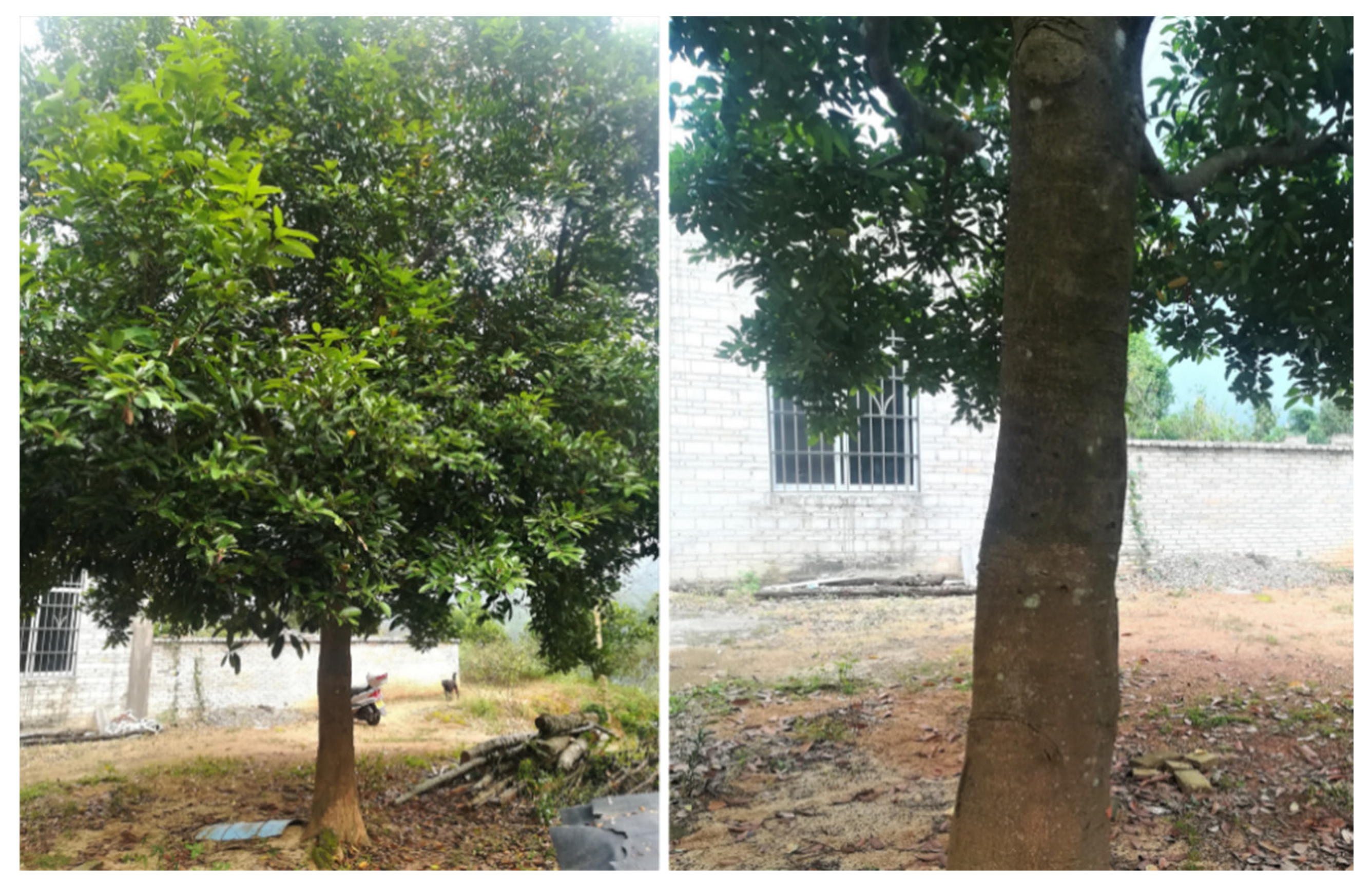
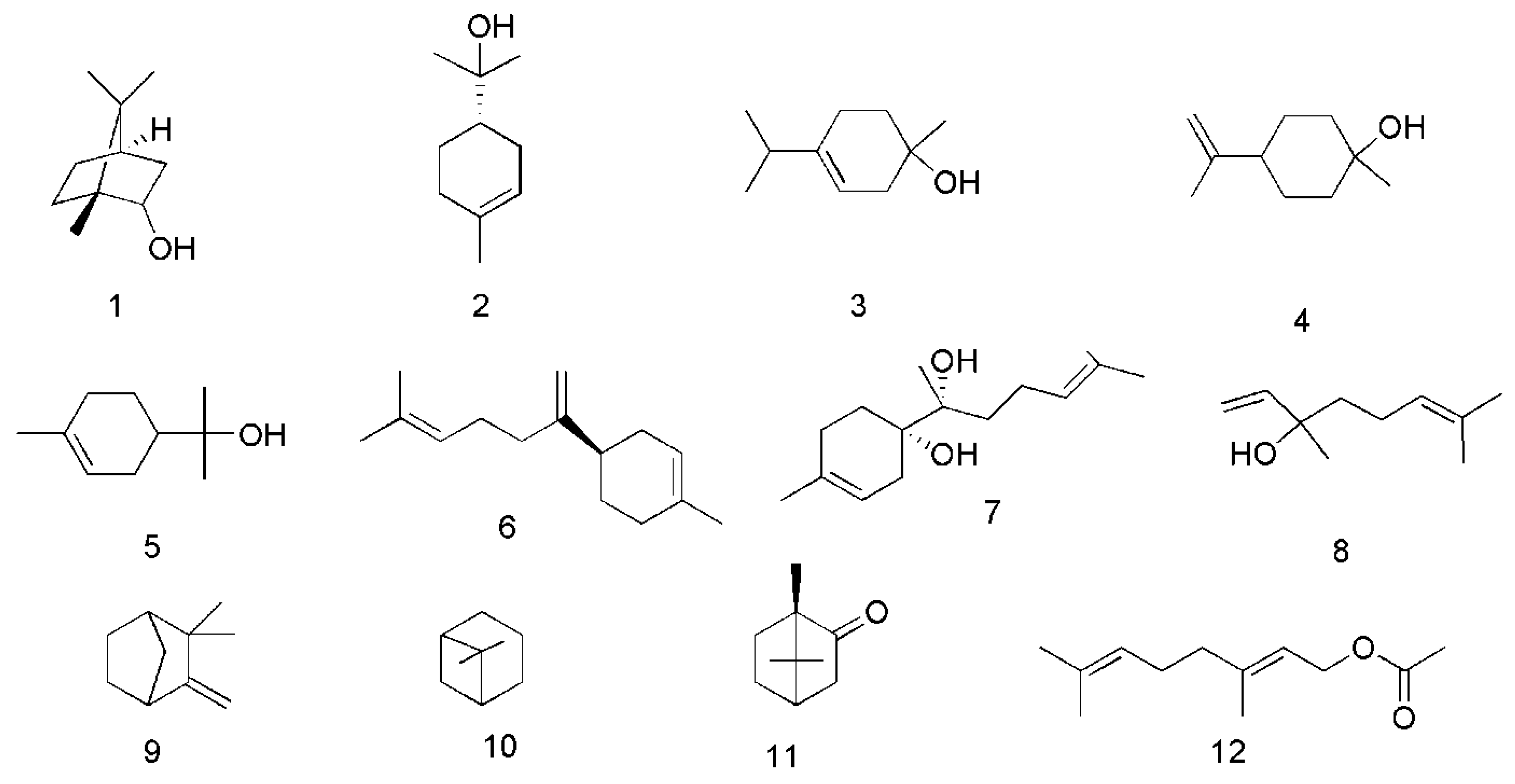

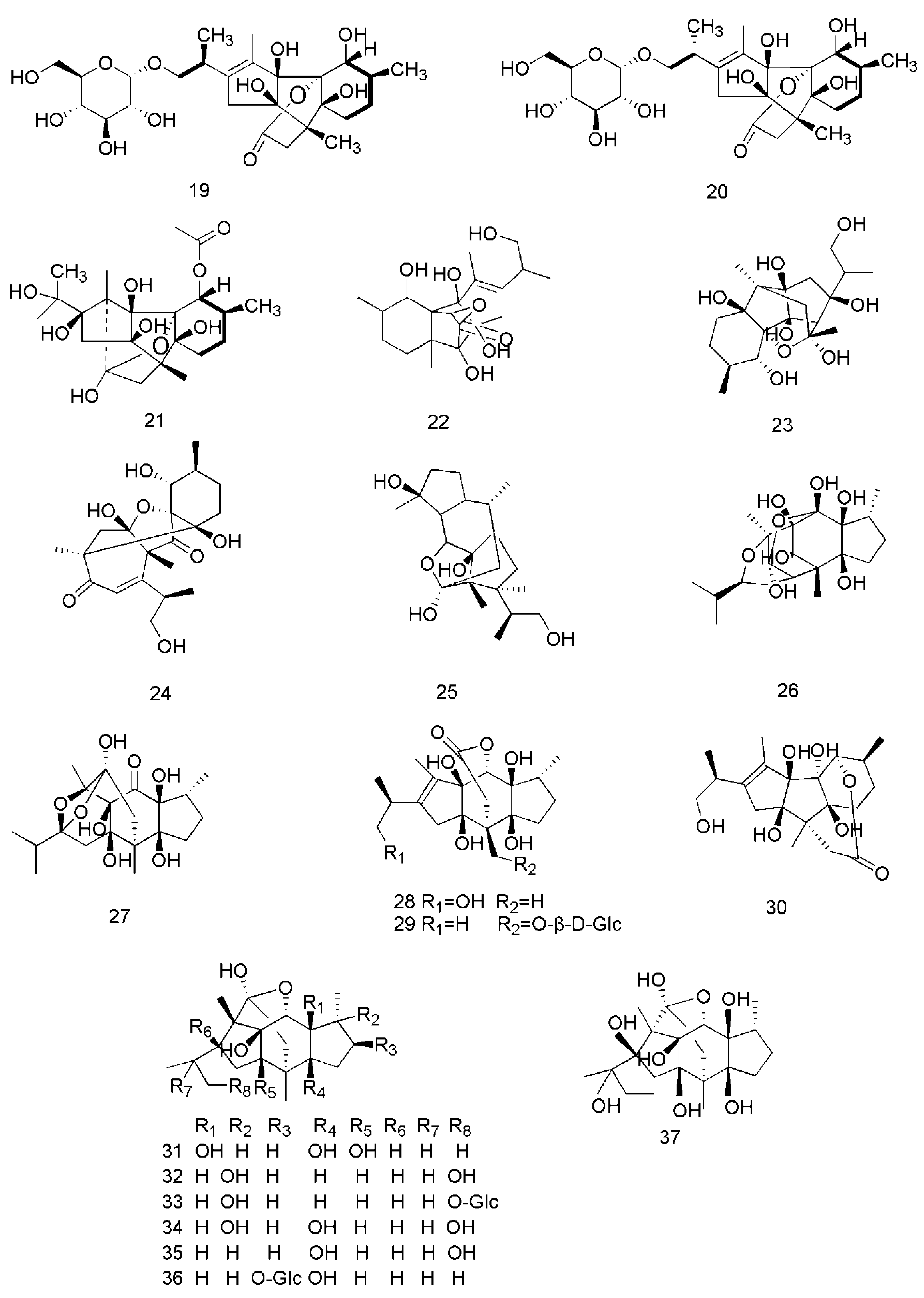
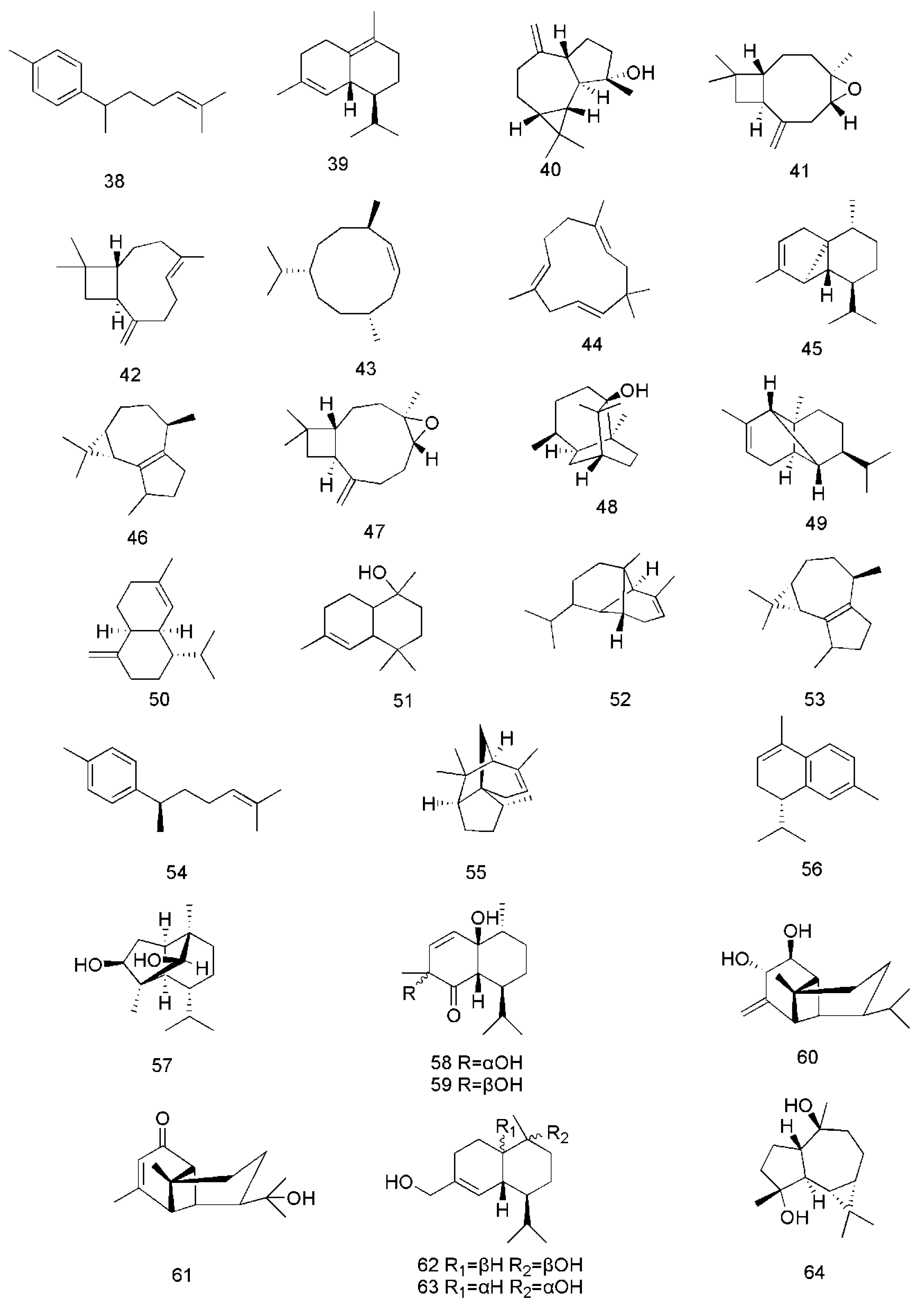
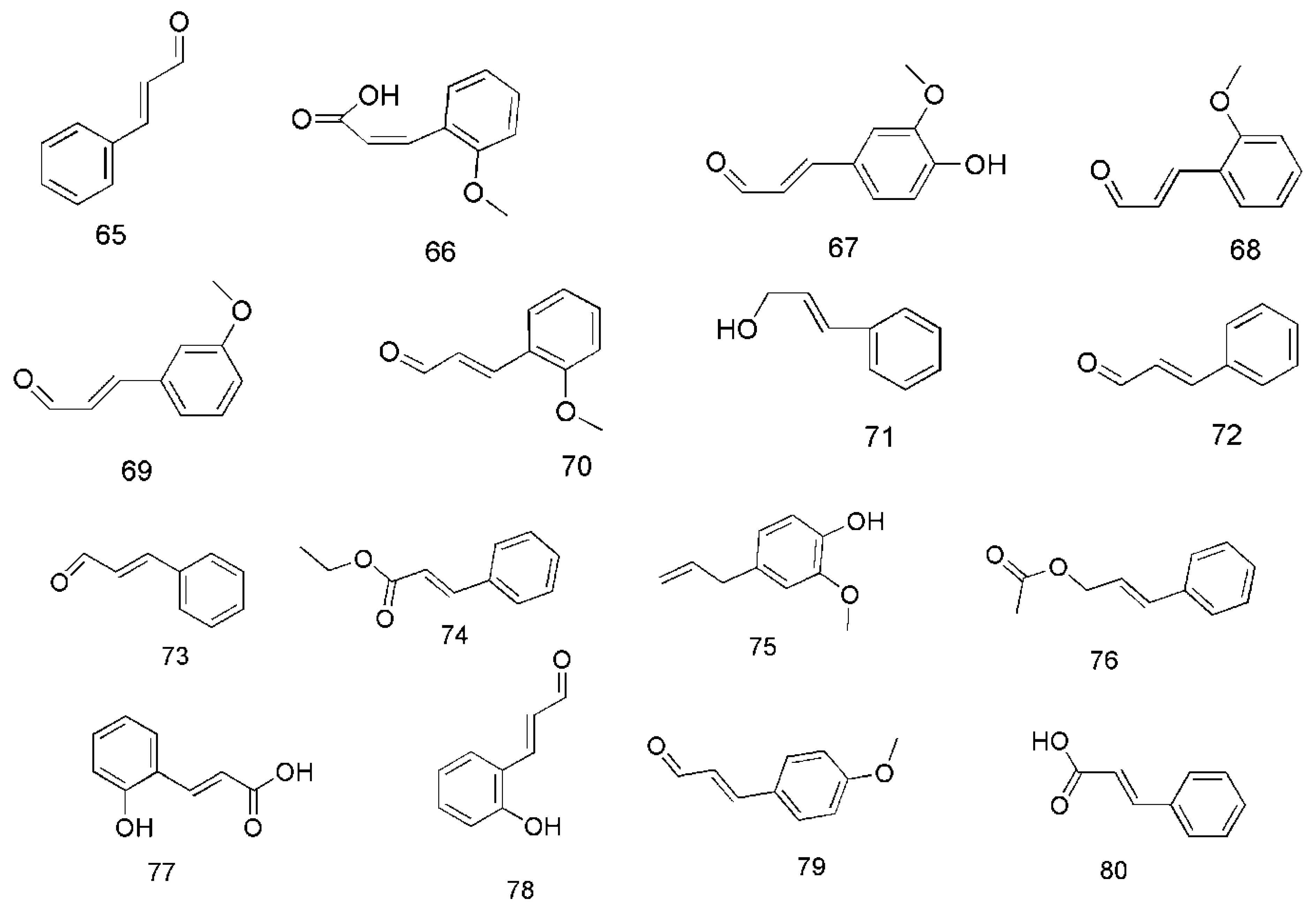
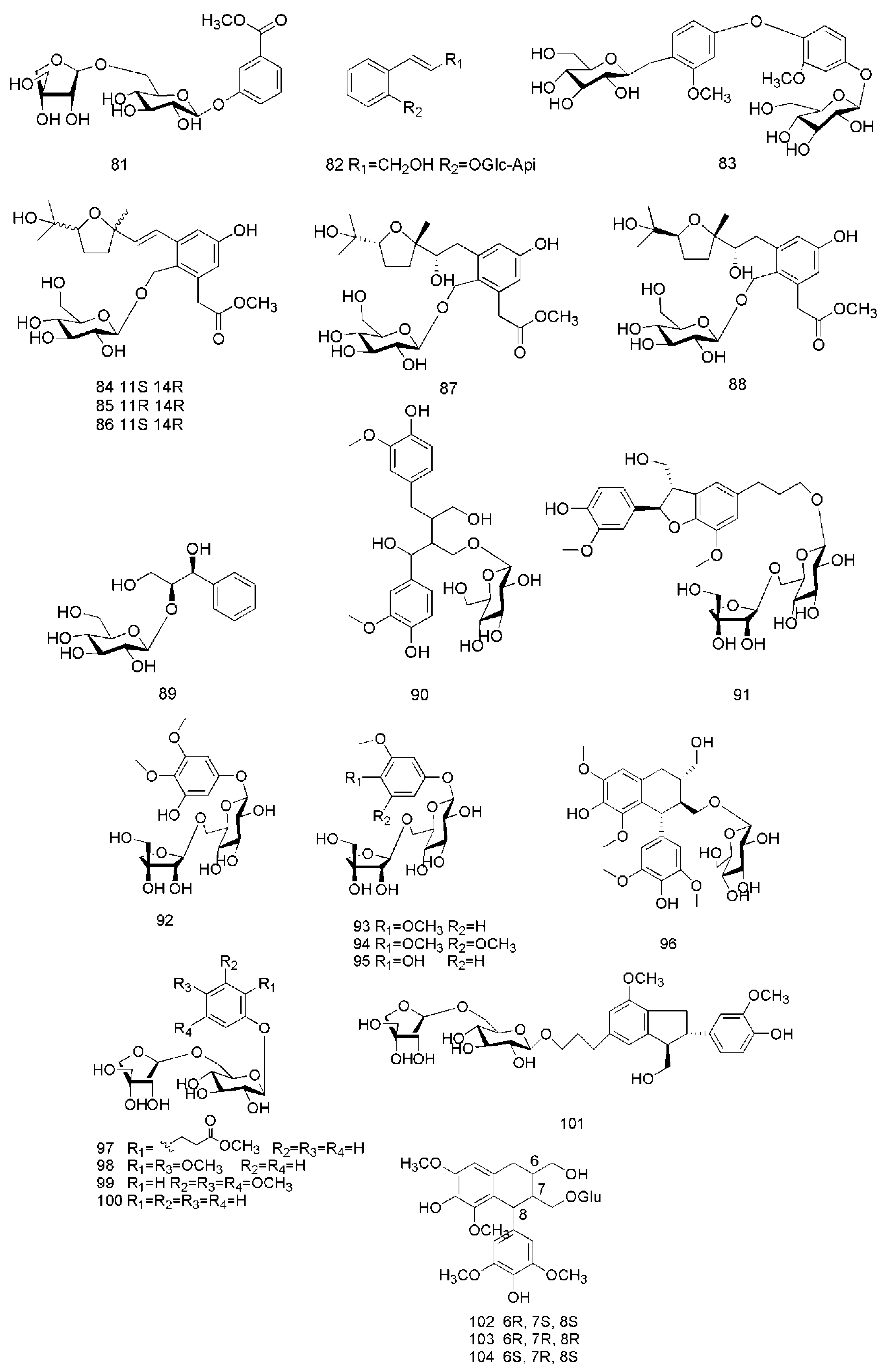
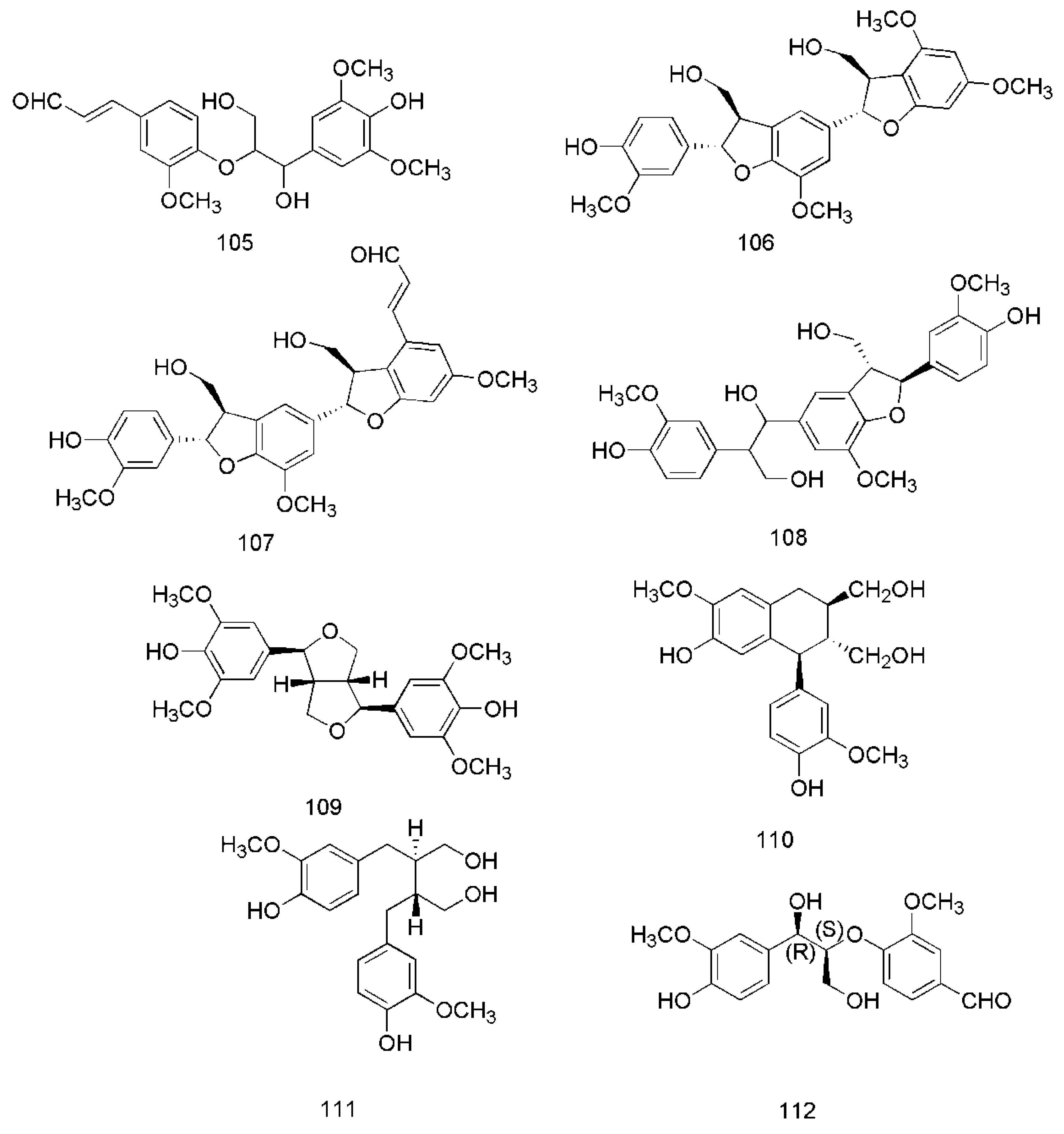

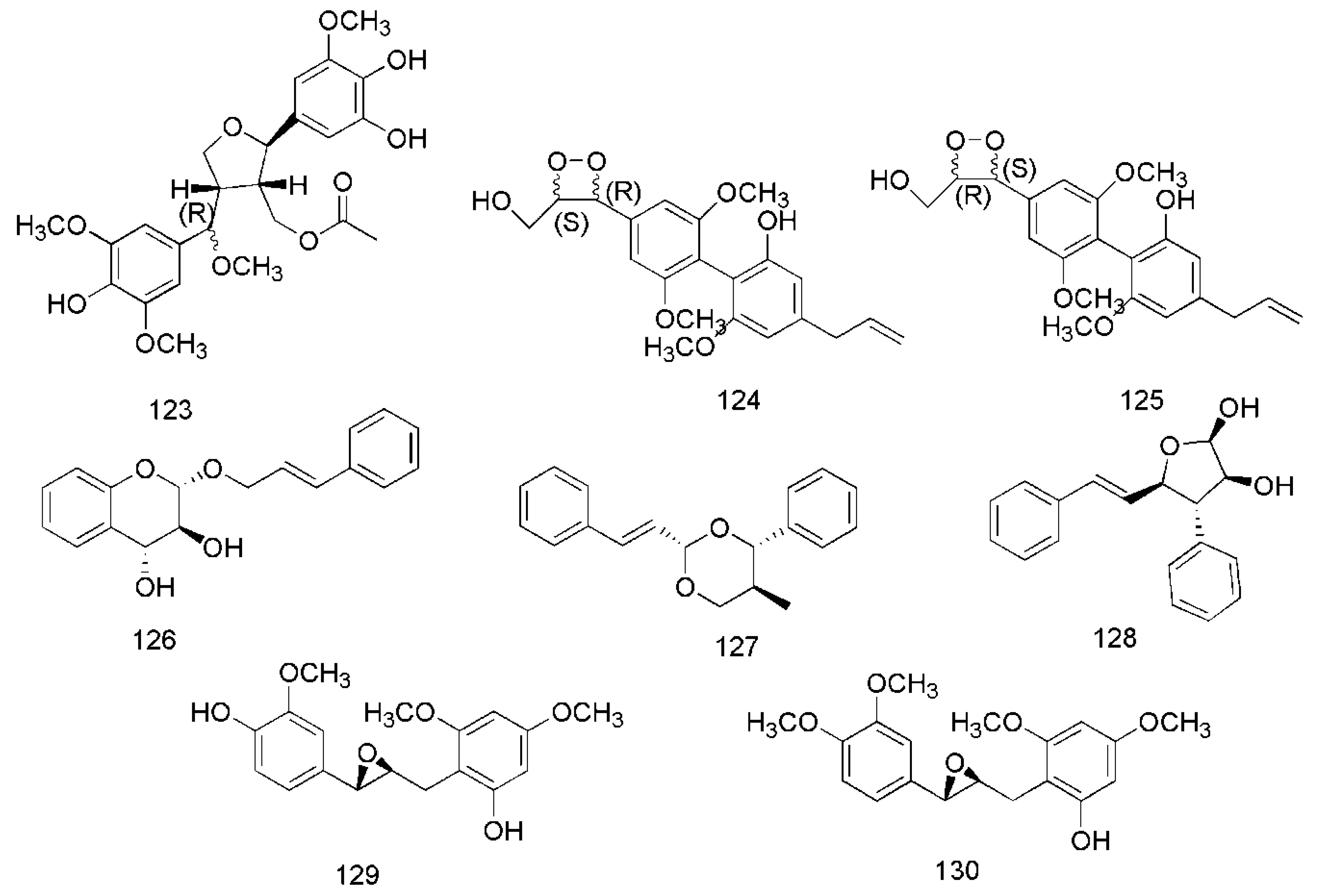
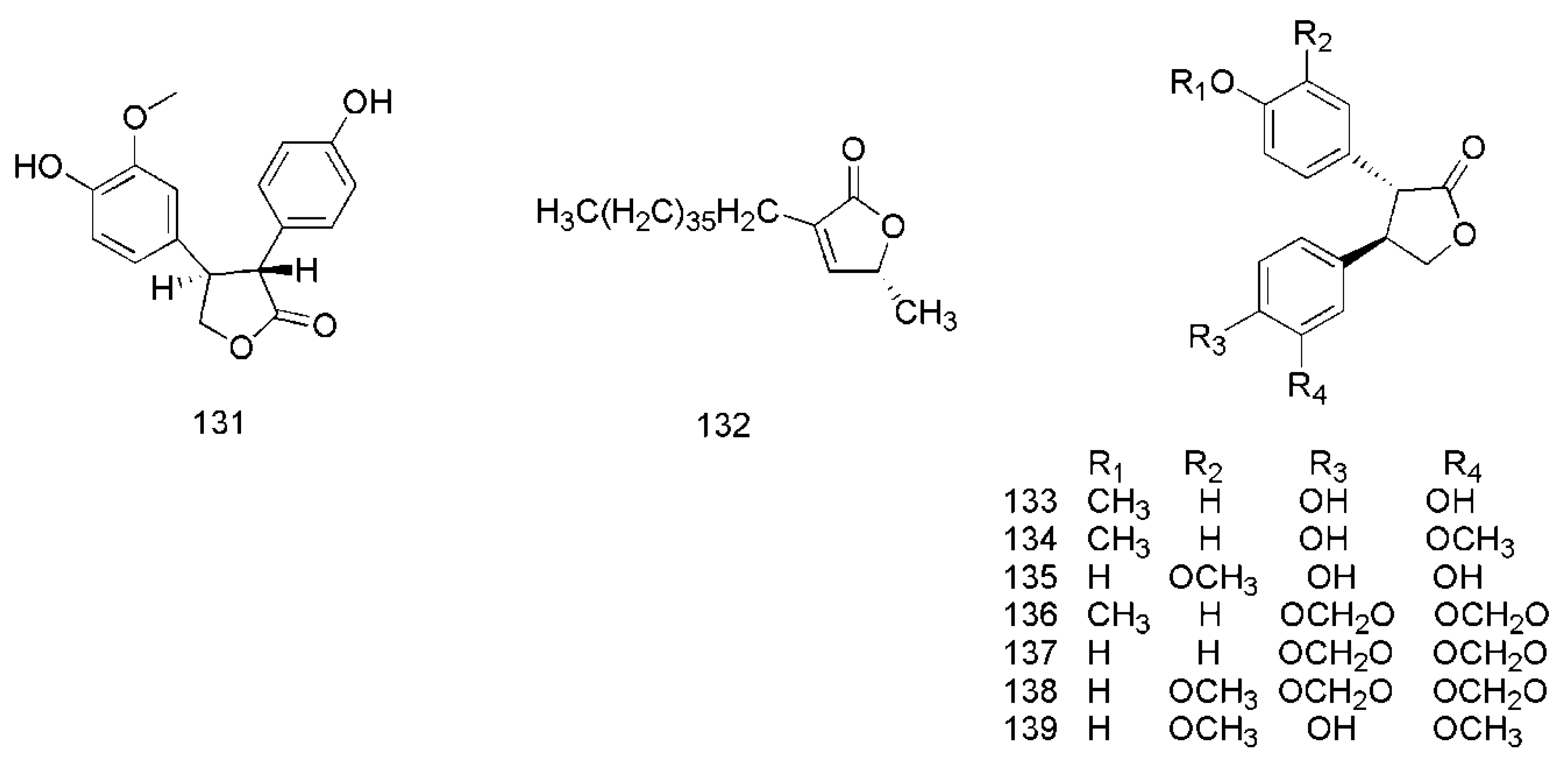
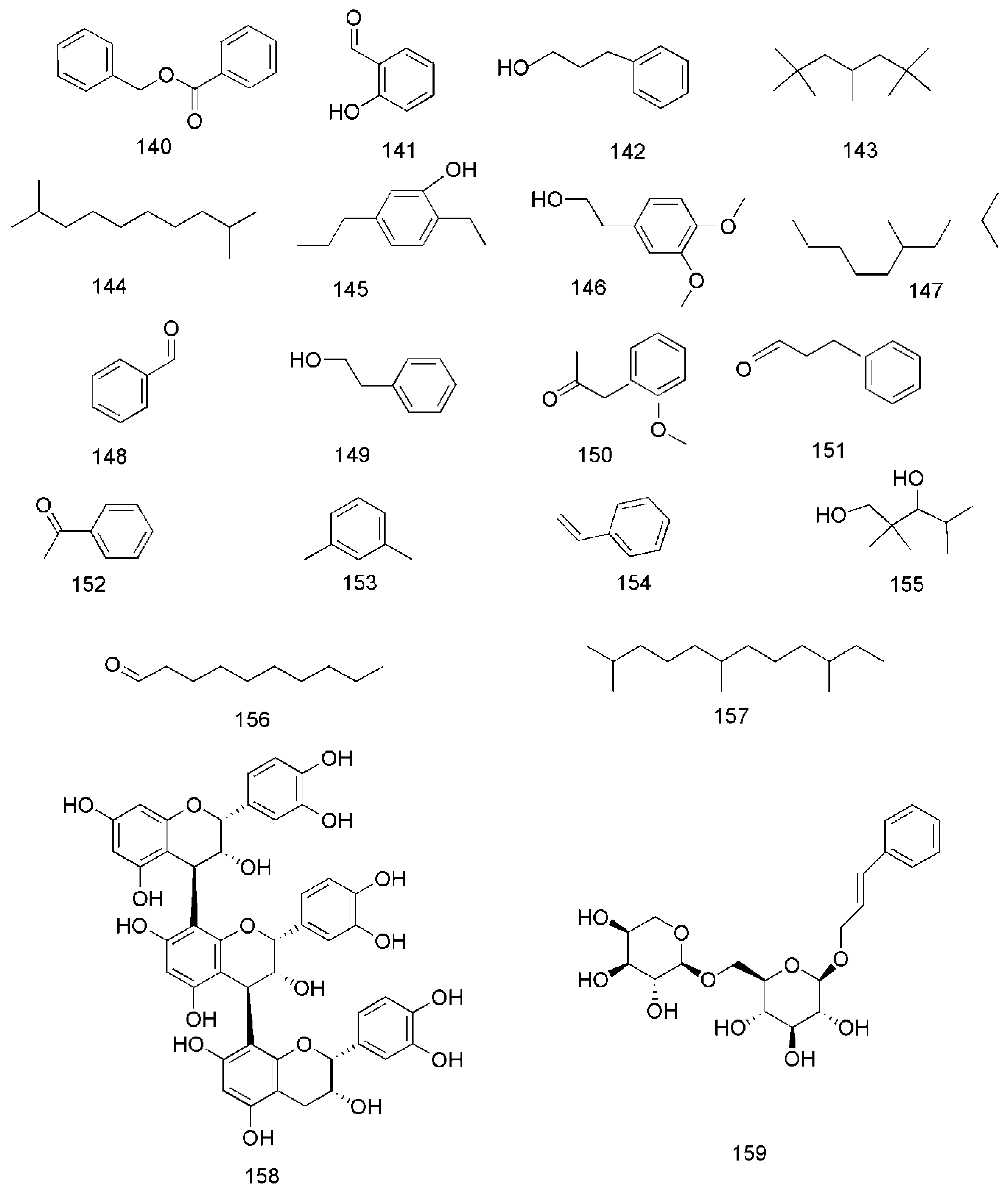
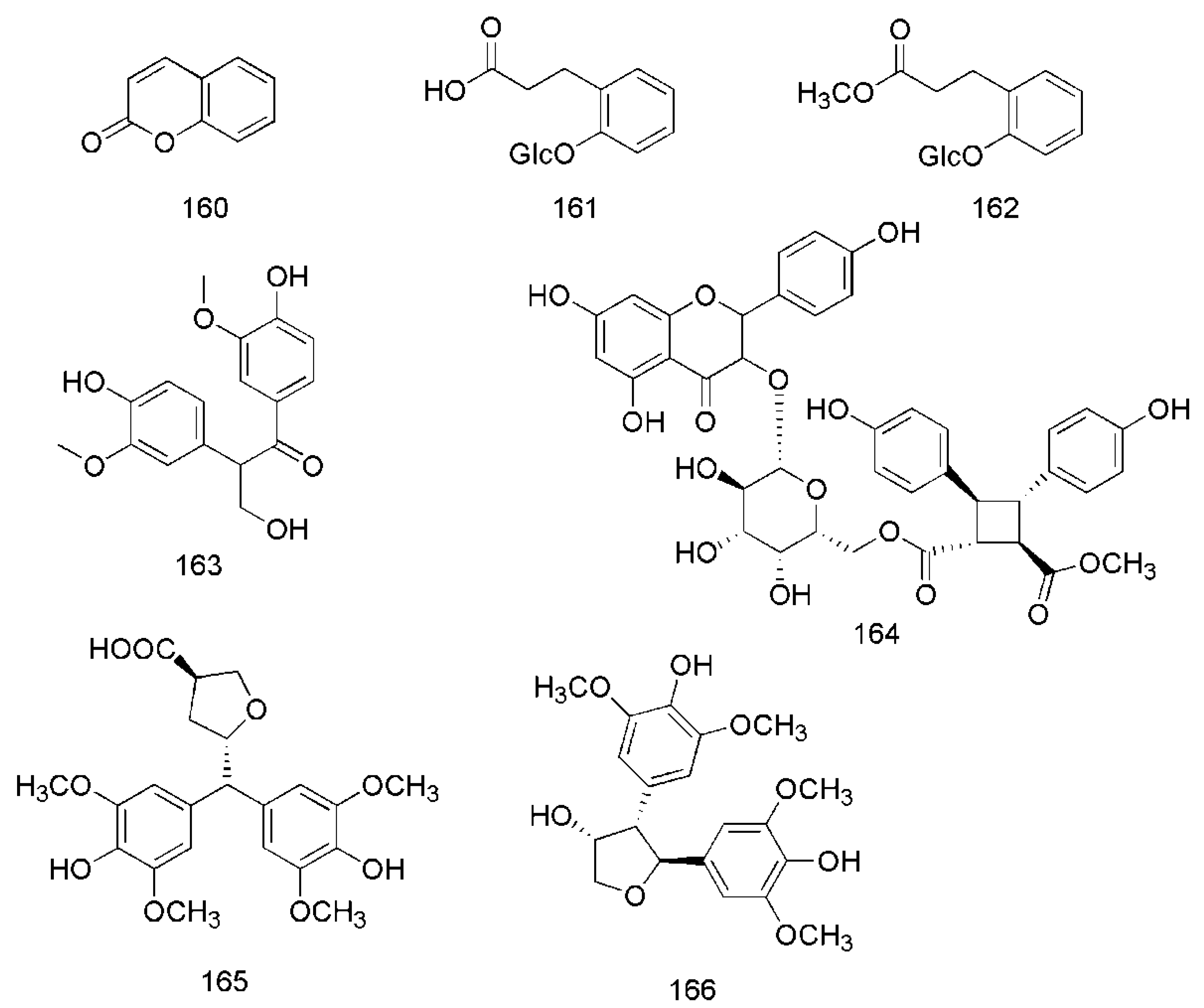
| Prescription Name | Main Component | Traditional and Clinical Uses | Reference |
|---|---|---|---|
| Zi Shen Pills | Anemarrhenae Rhizoma, Phellodendri Chinensis Cortex, Cinnamomi Cortex | Treating dysuria due to accumulation heat in bladder | [7] |
| Gui Fu Li Zhong Pills | Cinnamomi Cortex, Aconiti Lateralis Radix Praeparata, Codonopsis Radix, Glycyrrhizae Radix Et Rhizoma, Atractylodis, Macrocephalae Rhizoma, Roasted Ginger | Curing abdominal pain, diarrhoea and vomiting due to deficient cold of spleen and stomach, | [8] |
| Ding Gui Wen Wei San | Caryophylli Flos, Cinnamomi Cortex | Curing abdominal pain caused by cold syndrome | [9] |
| Jian Wei Shi Wei Pills | Granati Pericarpium, Amomi Fructus Rotundus, Chebulae Fructus, Cinnamomi Cortex, Piperis Fructus, Kaempferiae Rhizoma, Piperis Longi Fructus | Curing cacochylia, gasteremphraxis, vomiting and diarrhea | [10] |
| Qi Wei Wei Tong Capsules | Aucklandiae Radix, Piperis Longifructus, Alpiniae Officinaru Mrhizoma, Galli Gigerii Endothelium Corneum, Euodiae Fructus, Cinnamomi Cortex | Treating diarrhoea, vomiting, poor appetite, gastroduodenal ulcer and superficial gastritis | [11] |
| Qi Wei Pu Tao San | Gypsum Fibrosum, Carthami Flos, Glycyrrhizae Radix Et Rhizoma, Cyperi Rhizoma, Cinnamomi Cortex, Granati Pericarpium | Treating cough, asthma and chest tightness due to overwork and weakness | [12] |
| Wu Wei Qing Zhuo San | Granati Pericarpium, Carthami Flos, Carthami Flos, Cinnamomi Cortex, Piperis Longi Fructus | Treating poor appetite, dyspepsia, gastralgia, belching, abdominal distention and diarrhea | [13] |
| Wu Ling San | Poria, Alismatis Rhizoma, Polyporus, Cinnamomi Cortex, Atractylodis Macrocephalae Rhizoma | Treating dysuria, oedema, abdominal distension, diarrhoea and vomiting | [14] |
| Zhong Jing Wei Ling Pills | Cinnamomi Cortex, Corydalis Rhizoma, Ostreae Concha, Foeniculi Fructus, Amomi Fructus, Alpiniae Officinarum Rhizoma, Paeoniae Radix Alba, Glycyrrhizae Radix Et Rhizoma | Treating poor appetite, stomachache, abdominal distension and diarrhoea due to weak spleen and stomach | [15] |
| Er Xie Kang Tiemo | Caryophylli Flos, Piperis Fructus, Euodiae Fructus, Cinnamomi Cortex | Curing non-infectious diarrhea in children | [16] |
| Ba Wei Rou Gui Capsules | Cinnamomi Cortex, Aucklandiae Radix, Paeoniae Radix Alba, Piperis Longi Fructus, Foeniculi Fructus, Amomi Fructus Rotundus, Alpiniae Officinarum Rhizoma, Glycyrrhizae Radix Et Rhizoma | Curing stomachache, poor appetite and dyspepsia due to asthenia cold of spleen and stomach | [17] |
| Li Er Mian Capsules | Coptidis Rhizoma, Cinnamomi Cortex | Treating cardiopalmus, insomnia and dreamful sleep | [18] |
| Qian Lie Gui Huang Pills | Rhei Radix Et Rhizoma, Gleditsiae Fructus Abnormalis, Cinnamomi Cortex, Typhae Pollen, Talcum, Cyathulae Radix | Treating hyperplasia of prostate gland | [19] |
| Shi Quan Da Bu Tang Jiang | Codonopsis Radix, Atractylodis Macrocephalae Rhizoma, Poria, Glycyrrhizae Radix Et Rhizoma, Angelicae Sinensis Radix, Aconiti Radix Cocta, Paeoniae Radix Alba, Rehmanniae Radix Praeparata, Astragali Radix, Cinnamomi Cortex | Treating pallor, dizziness and palpitation, spontaneous perspiration, weariness of body, cold feet due to deficiency of Qi and blood | [20] |
| Shi Di Shui | Borneolum, Zingiberis Rhizoma, Rhei Radix Et Rhizoma, Foeniculi Fructus, Cinnamomi Cortex, Capsici Fructus | Treating dizziness, nausea, abdominal pain, gastrointestinal discomfort caused by heat stroke. | [21] |
| Shen Gui Li Zhong Pills | Ginseng Radix Et Rhizoma, Cinnamomi Cortex, Aconiti Lateralis Radix Praeparata, Zingiberis Rhizoma, Atractylodis Macrocephalae Rhizoma, Glycyrrhizae Radix Et Rhizoma | Curing acrohypothermy, gastrofrigid vomiting, hernia, algomenorrhea, abdominal pain and diarrhea due to deficiency of Yang Qi and asthenia cold of spleen and stomach | [22] |
| Gu Ben Tong Xue Granules | Cynomorii Herba, Cuscutae Semen, Cinnamomi Cortex, Morindae Officinalis Radix, Astragali Radix, Dioscoreae Rhizoma, Aconiti Lateralis Radix Praeparata, Lycii Fructus, Codonopsis Radix, Epimedi Folium | Treating mild primary thrombocytopenic purpura | [23] |
| Fu Fang Zao Fan Pills | Melanteritum, Panacis, Quinquefolii Radix, Hippocampus, Cinnamomi Cortex, Jujubae Fructus, Juglandis Semen | Treating aplastic anemia, aleucocytosis, thrombocytopenia, myelodysplastic syndrome | [24] |
| Xiao Er Fu Xie Tie | Caryophylli Flos, Cinnamomi Cortex, Piperis Longi Fructus | Treating non-infectious diarrhea in children duo to asthenia cold of spleen and stomach | [25] |
| Shao Fu Zhu Yu Granules | Cinnamomi Cortex, Angelicae Sinensis Radix, Typhae Pollen, Paeoniae Radix Rubra, Foeniculi Fructus, Corydalis Rhizoma, Myrrha, Aconiti Radix Cocta | Treating irregular menstruation, dysmenorrhea, lumbago and leukorrhea due to blood stasis and cold | [26] |
| Xin Bao Pills | Daturae Flos, Ginseng Radix Et Rhizoma, Cinnamomi Cortex, Aconiti Lateralis Radix Praeparata, Borneolum Syntheticum, Notoginseng Radix Et Rhizoma | Treating chronic cardiac insufficiency, bradycardia and angina pectoris | [27] |
| Xin Tong Ning Di Wan | Cinnamomi Cortex, Aconiti Radix Cocta, Cyperi Rhizoma | Treating coronary disease and angina pectoris | [28] |
| You Gui Pills | Rehmanniae Radix Praeparata, Aconiti Lateralis Radix Praeparata, Cinnamomi Cortex, Dioscoreae Rhizoma, Corni Fructus, Cuscutae Semen, Lycii Fructus, Angelicae Sinensis Radix, Eucommiae Cortex | Treating listlessness, spermatorrhea, asynodia, loose stool and frequent micturition due to deficiency of Yang Qi of kidney | [29] |
| Shi Wei Fu Zheng Granules | Ginseng Radix Et Rhizoma, Rehmanniae Radix Praeparata, Atractylodis Macrocephalae Rhizoma, Astragali Radix, Poria, Paeoniae Radix Alba, Angelicae Sinensis Radix, Cinnamomi Cortex, Glycyrrhizae Radix Et Rhizoma, Aconiti Radix Cocta | Treating aleucocytosis, decrease of immune function caused by tumor radiotherapy and chemotherapy | [30] |
| Ba Wei Shen Qi Pills | Rehmanniae Radix Praeparata, Dioscoreae Rhizoma, Poria, Schisandrae Chinensis Fructus, Cinnamomi Cortex, Alismatis Rhizoma, Aconiti Lateralis Radix Praeparata, Moutan Cortex | Treating edematous, cough, dyspnea, frequent micturition and loose stool duo to deficiency Yang of kidney | [31] |
| Dai Wen Jiu Gao | Capsici Fructus, Cinnamomi Cortex, Zineiberis Rhizoma Rrcens, Cinnamon Oil | Curing chronic rheumatic arthritis, chronic gastroenteritis | [32] |
| Classification | No. | Chemical Component | Part of Plant | Ref. |
|---|---|---|---|---|
| Terpenoids | 1 | endo-borneol | Twig | [33] |
| 2 | (−)-α-terpineol | Twig | [33] | |
| 3 | 1-terpineol | Leaves | [34] | |
| 4 | cis-β-terpineol | Leaves | [34] | |
| 5 | α-terpineol | Bark, leaves | [34,35] | |
| 6 | β-bisabolene | Bark, twig | [33,36] | |
| 7 | α-bisabolol | Bark, twig | [33,36] | |
| 8 | linalool | Bark | [36] | |
| 9 | camphene | Bark | [36] | |
| 10 | β-pinene | Bark | [36] | |
| 11 | camphor | Bark | [36] | |
| 12 | geranyl acetate | Bark | [36] | |
| 13 | cinnzeylanol | Bark | [37] | |
| 14 | anhydrocinnzeylanol | Bark | [37] | |
| 15 | cinnzeylanone | Bark | [37] | |
| 16 | 2,3-dehydroanhydrocinnzeylanine | Bark | [38] | |
| 17 | 1-acetylcinncassiol A | Bark | [38] | |
| 18 | anhydrocinnzeylanine | Bark | [38] | |
| 19 | 18S-cinncassiol A 19-O-β-d-glucopyranoside | Bark | [38] | |
| 20 | 18R-cinncassiol A 19-O-β-d-glucopyranoside | Bark | [38] | |
| 21 | 18-hydroxycinnzeylanine | Bark | [38] | |
| 22 | cinncassiol A | Bark | [38] | |
| 23 | cinncassiol B | Bark | [38] | |
| 24 | cinncassiol C | Bark | [38] | |
| 25 | cinncassiol D | Bark | [38] | |
| 26 | cinncassiol E | Bark | [38] | |
| 27 | cinncassiol F | Bark | [39] | |
| 28 | cinncassiol G | Bark | [39] | |
| 29 | 16-O-β-d-glucopyranosyl-19-deoxycinncassiol G | Bark | [39] | |
| 30 | cinnacasol | Bark | [39] | |
| 31 | perseanol | Bark | [39] | |
| 32 | cinncassiol D1 | Bark | [39] | |
| 33 | D1 glucoside | Bark | [39] | |
| 34 | D2 glucoside | Bark | [39] | |
| 35 | D3 glucoside | Bark | [39] | |
| 36 | D4 glucoside | Bark | [39] | |
| 37 | 18-hydroxyperseanol | Bark | [39] | |
| 38 | curcumene | Twig | [33] | |
| 39 | δ-cadinene | Twig | [33] | |
| 40 | espatulenol | Twig | [33] | |
| 41 | caryophyllene oxide | Twig | [33] | |
| 42 | trans-caryophyllene | Bark | [40] | |
| 43 | germacrene D | Bark | [40] | |
| 44 | caryophyllene | Bark, leaves | [34,35] | |
| 45 | α-cubebene | Bark | [35] | |
| 46 | (–)-isoledene | Bark | [35] | |
| 47 | α-bulnesene | Bark | [35] | |
| 48 | patchouli alcohol | Bark | [35] | |
| 49 | α-copaene | Bark | [35] | |
| 50 | α-muurolene | Bark, twig | [33,35] | |
| 51 | α-cadinol | Bark, twig | [33,35] | |
| 52 | copaene | Bark | [36] | |
| 53 | isoledene | Bark | [36] | |
| 54 | 1-(1,5-dimethyl-4-hexenyl)-4-methylbenzene | Bark | [36] | |
| 55 | cedrene | Bark | [36] | |
| 56 | α-calacorene | Bark | [36] | |
| 57 | cinnamoid A | Bark | [37] | |
| 58 | cinnamoid B | Bark | [37] | |
| 59 | cinnamoid C | Bark | [37] | |
| 60 | cinnamoid D | Bark | [37] | |
| 61 | cinnamoid E | Bark | [37] | |
| 62 | (−)-15-hydroxytmuurolol | Bark | [37] | |
| 63 | 15-hydroxy-α-cadinol | Bark | [37] | |
| 64 | ent-4β,10α- dihydroxyaromadendrane | Bark | [37] | |
| Phenylpropanoids | 65 | cinnamaldehyde | Bark | [40] |
| 66 | cis-2-methoxycinnamic acid | Bark, twig, leaves | [40] | |
| 67 | coniferaldehyde | Twig | [33] | |
| 68 | o-methoxycinnamaldehyde | Bark | [40] | |
| 69 | 2-methoxycinnamaldehyde | Bark, twig | [33,35] | |
| 70 | 2′-methoxycinnamaldehyde | Bark, twig | [33,35] | |
| 71 | cinnamylalcohol | Bark, twig | [33,36] | |
| 72 | cis-cinnamaldehyde | Bark | [36] | |
| 73 | trans-cinnamaldehyde | Bark | [36] | |
| 74 | ethyl cinnamate | Bark | [36] | |
| 75 | eugenol | Bark, leaves | [34,36] | |
| 76 | cinnamyl acetate | Bark, leaves | [34,36] | |
| 77 | 2-hydroxycinnamic acid | Bark, twig | [41,42] | |
| 78 | 2-hydroxycinnamaldehyde | Bark, twig | [41,42] | |
| 79 | 4-methoxycinnamaldehyde | Bark, twig | [41,42] | |
| 80 | cinnamic acid | Bark, twig | [41,42] | |
| Glycosides | 81 | cinnacasolide A | Twig | [42] |
| 82 | cinnacasolide B | Twig | [42] | |
| 83 | cinnacasolide C | Twig | [42] | |
| 84 | cinnacasside A | Bark, twig | [43,44] | |
| 85 | cinnacasside C | Bark, twig | [43,44] | |
| 86 | cinnacasside B | Bark | [45] | |
| 87 | cinnacasside F | Bark | [45] | |
| 88 | cinnacasside G | Bark | [45] | |
| 89 | cinnacassoside D | Bark | [46] | |
| 90 | cinnacassoside A | Bark | [47] | |
| 91 | cinnacassoside B | Bark | [47] | |
| 92 | cinnacassoside C | Bark | [47] | |
| 93 | 3,4,5-trimethoxyphenol-β-d–apiofuranosyl (1→6)-β-d-glucopyranoside | Bark | [47] | |
| 94 | 3-trimethoxy-4- hydroxyphenoll-β-d–apiofuranosyl (1→6)-β-d-glucopyranoside | Bark | [47] | |
| 95 | 3,4-dimethoxyphenol-β-d–apiofuranosyl (1→6)-β-d-glucopyranoside | Bark | [47] | |
| 96 | (−)-lyoniresinol 3α-O-β-d-glucopyranoside | Bark | [47] | |
| 97 | methyl-2-phenylpropanoate-2-O-β-dapiofuranosyl-(1→6)-O-β-d–glucopyranoside | Bark | [48] | |
| 98 | cinnacasolide E | Bark | [48] | |
| 99 | 3,4,5-trimethoxyphenol-β-d-apiofuranosyl-(1→6)-O-β-d-glucopyranoside | Bark | [48] | |
| 100 | Samwiside | Bark | [48] | |
| 101 | phenol-β-d-apiofuranosyl-(1→6)-O-β-d-glucopyranoside | Bark | [48] | |
| 102 | (6R,7R,8R)-7a-[(β-d-glucopyranosyl) oxy] lyoniresinol | Bark | [48] | |
| 103 | (6S,7R,8R)-7a-[(β-d-glucopryanosyl) oxy] lyoniresinol | Bark | [48] | |
| 104 | (6R,7S,8S)-7a-[(β-d-glucopyranosyl) oxy] lyoniresinol | Bark | [48] | |
| Lignans | 105 | cinncassin E | Bark | [46] |
| 106 | cinncassin D | Bark | [46] | |
| 107 | picrasmalignan A | Bark | [46] | |
| 108 | (+)-leptolepisol C | Bark | [46] | |
| 109 | (−)-(7R,8S,7′R,8′S)-syringaresinol | Bark | [46] | |
| 110 | (+)-isolariciresinol | Bark | [46] | |
| 111 | (−)-secroisolariciresinol | Bark | [46] | |
| 112 | (+)-erythro-(7R,8S)-guaiacylglycerol-8-vanillin ether | Bark | [46] | |
| 113 | (+)-threo-(7S,8S)-guaiacylglycerol-β-coniferyl aldehyde ether | Bark | [46] | |
| 114 | (+)-erythro-(7S,8R)-guaiacylglycerol-β-coniferyl aldehyde ether | Bark | [46] | |
| 115 | (−)-erythro-(7R,8S)-guaiacylglycerol-β-O-4′-sinapoyl ether | Bark | [46] | |
| 116 | (−)-erythro-(7S,8R)-syringylglycerol-8-O-4′- (sinapoyl alcohol) ether | Bark | [46] | |
| 117 | (7S,8R)-lawsonicin | Bark | [46] | |
| 118 | 5′-methoxylariciresinol | Bark | [46] | |
| 119 | (+)-(7′R,8R,8′R)-5,5′-dimethoxylariciresinol | Bark | [46] | |
| 120 | (+)-(7′S,8R,8′R)-5,5′-dimethoxylariciresinol | Bark | [46] | |
| 121 | cinnacassin F | Twig | [44] | |
| 122 | cinnacassin G | Twig | [44] | |
| 123 | cinnacassin H | Twig | [44] | |
| 124 | cinnacassin I | Twig | [44] | |
| 125 | cinnacassin J | Twig | [44] | |
| 126 | cinnacassin K | Twig | [44] | |
| 127 | cinnacassin L | Twig | [44] | |
| 128 | cinnacassin M | Twig | [44] | |
| 129 | cinnacassin N | Twig | [44] | |
| 130 | cinnacassin O | Twig | [44] | |
| Lactones | 131 | cinnamomulactone | Twig | [49] |
| 132 | 5R-methyl-3-heptatriacontyl-2(5H)-furanone | Twig | [50] | |
| 133 | cinncassin A2 | Twig | [44] | |
| 134 | cinncassin A3 | Twig | [44] | |
| 135 | cinncassin A4 | Twig | [44] | |
| 136 | cinncassin A5 | Twig | [44] | |
| 137 | cinncassin A6 | Twig | [44] | |
| 138 | cinncassin A7 | Twig | [44] | |
| 139 | cinncassin A1 | Twig | [44] | |
| Other Compounds | 140 | benzyl benzoate | Twig | [33] |
| 141 | 2-hydroxybenzaldehyde | Twig | [33] | |
| 142 | 3-phenylpropanol | Twig | [33] | |
| 143 | 2,2,4,6,6-pentamethylheptane | Bark | [40] | |
| 144 | 2,5,9-trimethyldecane | Bark | [40] | |
| 145 | 2-ethyl-5-propylphenol | Bark | [40] | |
| 146 | 3,4-dimethoxyphenethyl alcohol | Bark | [40] | |
| 147 | 2,5-dimethylundecane | Bark | [40] | |
| 148 | benzaldehyde | Bark, twig | [33,40] | |
| 149 | phenylethyl alcohol | Bark, twig | [33,40] | |
| 150 | 2-methoxyphenylacetone | Bark | [35] | |
| 151 | benzenepropanal | Bark, twig | [33,35] | |
| 152 | acetophenone | Bark, twig | [33,36] | |
| 153 | benzene,1,3-dimethyl | Bark | [36] | |
| 154 | styrene | Bark | [36] | |
| 155 | 1,3-pentanediol,2,2,4-trimethyl | Bark | [36] | |
| 156 | decanal | Bark | [36] | |
| 157 | dodecane, 2,6,10-trimethyl | Bark | [36] | |
| 158 | epicatechin-(4β→8)-epicatechin-(4β→8)-epicatechin | Bark | [51] | |
| 159 | rosavin | Bark, twig | [42,47] | |
| 160 | coumarin | Bark, twig | [36,49] | |
| 161 | dihydromelilotoside | Twig | [42] | |
| 162 | methyl dihydromelilotoside | Twig | [42] | |
| 163 | evofolin B | Bark, twig | [44,47] | |
| 164 | cinnamomoside A | Twig | [44] | |
| 165 | cinncassin C | Bark | [46] | |
| 166 | cinncassin B | Bark | [46] |
| Effects | Detail | Extracts/Compounds | Concentration/Dose | In Vivo/In Vitro | Ref. |
|---|---|---|---|---|---|
| Anti-tumor Effects | Lung cancer | ||||
| Inhibiting Nrf2-regulated enzyme activity and Nrf2 expression | procyanidins | Cell lines of A549, 0–300 μg/mL | in vitro | [59] | |
| Inhibiting Nrf2 expression and cell proliferation | procyanidins | Cell lines of A549, LK-2 and LU-99, 2.5 μg/mL | in vitro | [60] | |
| Inhibiting Nrf2 expression and activation of IGF-1R phosphorylation | procyanidins | Cell lines of A549, LU-99, 10 μg/mL | in vitro | [61] | |
| Inhibiting TGF-β-induced EMT | WEBC procyanidin C1 | Cell lines of A549, 12.5–200 μg/mL 1.25–40 μg/mL | in vitro | [51] | |
| Inhibiting TGF-b1-induced EMT | EEC EEC | Cell lines of A549, H1299, 20–60 μg/mL 100,200 mg/Kg | in vitro in vivo | [62] | |
| Repressing u-PA/MMP-2 via FAK to ERK1/2 pathways | EEC | Cell lines of A549, H1299, 0–60 μg/mL | in vitro | [63] | |
| Inhibiting the activity of pyruvate dehydrogenase kinase (PDHK) | WETC | Cell lines of A549, H1299 and LLC, 0–200 μg/mL | in vitro | [64] | |
| Oral cancer | |||||
| Cytotoxic effects on HSC-3 cells | EOC cinnamaldehyde | HSC-3 cell line, 2.5–40 μg/mL, IC50 = 13.7 μg/mL 2.5–40 μg/mL, IC50 = 10 μg/mL | in vitro | [65] | |
| Enhancement of autophagy markers to induce cell apoptosis | EETC | 0–100 μg/mL 250, 500 mg/Kg | in vitro in vivo | [66] | |
| Breast cancer | |||||
| Cytotoxic effects on MCF-7 and MDA-MB-231 | HEBC | Cell lines of MCF-7 and MDA-MB-231, 50, 100, 200 μg/mL, IC50 = 34 μg/mL, IC50 = 32.42 μg/mL | in vitro | [67] | |
| Cervical cancers | |||||
| Inducing cell apoptosis | WEBC | SiHa cell line, 0–80 μg/mL | in vitro | [68] | |
| Head and neck squamous cell carcinoma (HNSCC) | |||||
| Inhibiting EGFR-TK activity | EOTC | 0.625–10 μg/mL | in vivo | [53] | |
| Anti-Inflammatory and Analgesic Effects | Inhibiting LPS-stimulated inflammatory and carrageenan induced hind paw edema | cinnamaldehyde | murine macrophage cell line RAW264.7, 6.25–50 μM 1.25, 2.5 and 5 mg/kg | in vitro in vivo | [69] |
| Inhibiting LPS-stimulated inflammatory | WEBC | 20, 100 and 500 mg/kg peritoneal macrophages, 10, 50, 100, 200, and 400 μg/mL | in vivo in vitro | [4] | |
| Inhibiting LPS-stimulated inflammatory | EOLC cinnamaldehyde | Macrophage J774A.1 cells, 1.25–20 μg/mL, IC50 = 6.1 ± 0.25 μg/mL IC50 = 9.97 ± 0.35 μg/mL | in vitro | [34] | |
| Inhibitory effects on NO production and TNF-α | EAEBC | RAW 264.7 and J774A.1 macrophages, IC50 = 19.7 ± 78.4 μg/mL, LC50 = 140 ± 9.0 μg/mL | in vitro | [70] | |
| Inhibiting carrageenan induced hind paw Edema, oxytocin and acetic acid-induced abdominal constriction test | EOTC | 15, 30, and 60 mg/kg | in vivo | [52] | |
| Inhibitory effects on NO production | EAEBC | BV-2 cells | in vitro | [46] | |
| Inhibiting LPS-induced septic shock and inflammasome | EEBC | 25, 50 and 100 mg/kg | in vivo | [71] | |
| Inhibiting matrix metalloproteinases | cinnamomulactone | FLS cells, 0.1, 1, 10 and 100 μM | in vitro | [49] | |
| Inhibiting Complete Freund’s adjuvant (CFA)-induced arthritis | WEBC | 50, 100 and 200 mg/kg | in vivo | [72] | |
| Inhibitory effects against Oxaliplatin-Induced Neuropathic Cold Allodynia | WEBC coumarin | 100, 200 and 400 mg/kg 10 mg/kg | in vivo | [74] | |
| Inhibitory effects against oxaliplatin-induced neuropathic cold allodynia | cinnamic acid | 10, 20 and 40 mg/kg | in vivo | [75] | |
| Anti-diabetic and obesity effect | Exhibiting potent hypoglycemic activity | WEBC | 100, 250 and 500 mg/kg insulinoma RINm5F cells, 0.125, 0.25, 0.5 and 1.0 mg/mL | in vivo in vitro | [3] |
| Exhibiting potent hypoglycemic activity | polyphenols | 10 and 50 mg/kg | in vivo | [76] | |
| Inhibiting α-glucosidase, Sucrase and Maltase | AEBC | IC50 = 0.474 mg/mL, IC50 = 0.10 mg/mL, IC50 = 0.38 mg/mL | in vitro | [77] | |
| Exhibiting potent hypoglycemic activity | de-coumarinated extracts | 200 mg/kg | in vivo | [78] | |
| Inhibiting diabetic nephropathy | EEBC | Rat mesangial cells, 10 μM | in vitro | [47] | |
| Inhibiting diabetic nephropathy | EEBC | Rat mesangial cells, 10, 30 and 50 μg/mL | in vitro | [37] | |
| Preventing chronic complications of experimentally induced type II diabetes | EBC | 500, 1000 and 1500 mg/kg | in vivo | [79] | |
| Protecting diabetic kidney | CcAgNPS | 5, 10 and 200 mg/kg | in vivo | [80] | |
| Preventing of obesity | EC | 3T3-L1 cell, 50, 100 and 200 μg/mL | in vitro | [81] | |
| Preventing high-fat diet-induced obesity | WEBC | 100, 300 mg/kg C2C12 myoblasts, 0.1, 0.2 mg/mL | in vivo in vitro | [82] | |
| Antibacterial and Antiviral Effects | Inhibitory effects against Staphylococcus aureus, Aspergillus niger, Bacillus subtilis and Escherichia coli | EOBC | MIC = 200, 200, 200 and 400 μg/mL | in vitro | [54] |
| Inhibitory effects against Escherichia coli, Staphylococcus aureus, Klebsiella pneumoniae and Pseudomonas aeruginosa | EOBC | MIC = 0.28, 0.28, 0.56 and 0.11 mg/mL | in vitro | [83] | |
| Inhibitory effects against non-O157 STECs | EOBC | MIC = 0.025% (v/v) | in vitro | [84] | |
| Inhibitory effects against Escherichia coli and Staphylococcus | EOBC | MIC = 1.0 mg/mL | in vitro | [85] | |
| Inhibitory effect against Staphylococcus hyicus and Staphylococcus aureus | EOC | MIC = 0.078% | in vitro | [86] | |
| Inhibitory effects against propionibacterium acnes, Staphylococcus Epidermidis and Staphylococcus aureus | EOBC | MIC = 0.156, 0.313 and 0.25 μL/mL | in vitro | [87] | |
| Inhibitory effect against Staphylococcus aureus | EOC | MIC = 500 μL/L | in vitro | [88] | |
| Inhibitory effects against Escherichia coli, Staphylococcus aureus, and Pseudomonas aeruginosa | EOBC | MIC = 4.88, 4.88, and 19.53 μg/mL | in vitro | [89] | |
| Inhibitory effects against avian influenza virus subtype H7N3 | CcAgNPS | IC50 = 125 μg/mL | in vitro | [90] | |
| Cardiovascular Protective Effects | Inhibiting proliferation of vascular smooth muscle cells | WEBC | Rat aortic VSMCs, 10, 30 and 50 μg/mL | in vitro | [91] |
| Inhibiting angiogenesis | WEC | HUVECs, 0–100 μg/mL | in vitro | [92] | |
| Preventing diabetic cardiomyopathy | WEBC | 750 mg/kg | in vivo | [93] | |
| Cytoprotective Effects | Protecting against gastric ulcers induced by stress, ethanol or HCl | CP | 2, 10 and 100 mg/g per feed | in vivo | [94] |
| Ameliorating cisplatin-induced cytotoxicity | WEBC | Vero cell line, 10–50 μg/mL | in vitro | [95] | |
| Neuroprotective Effects | Regulating the 5-HT1A and GABAergic system | EEC | In the acute experiment, 250, 500 and 750 mg/mL In the chronic experiment, 50, 75 and 100 mg/mL | in vivo | [96] |
| Region specific change of 5-HT1A receptors | EEBC | 100, 750 mg/mL | in vivo | [97] | |
| Correct cognitive impairment | WEC | 0.75 mg/mL PC12 cell line, 1, 10 and 100 μg/mL, IC50 = 0.7 μg/mL | in vivo in vitro | [98] | |
| Neuroprotective effect | total flavonoids | PC12 cell line 20–100 μg/mL | in vitro | [99] | |
| Inhibiting serotonin reuptake | EC | 25 and 50 mg/kg | in vivo | [100] | |
| Immunoregulation Effects | Inhibitory effects against proliferation of T cell and B cell | EEBC cinncassiol G and cinnacasol | 100 μg/mL 50 and 100 μM | in vitro | [39] |
| Inhibitory effects against proliferation of T cell | phenolic glycosides | 12.5–200 μM | in vitro | [48] | |
| Inhibitory effects against proliferation of T cell and B cell | cinnacasside F | 400 μM | in vitro | [45] | |
| Anti-tyrosinase Activity | Inhibitory effects against tyrosinase | EOBC trans-cinnamaldehyde | IC50 = 6.16 ± 0.04 mg/mL IC50 = 4.04 ± 0.08 mg/mL | in vitro | [40] |
| Inhibitory effects against tyrosinase | EOC trans-cinnamaldehyde | B16 melanoma cells, 1.0, 2.0, 2.5 and 5.0 μg/mL, IC50 = 6.16 ± 0.04 mg/mL 1.0, 2.0 and 2.5 μg/mL, IC50 = 4.04 ± 0.08 mg/mL | in vitro | [101] | |
| Other Pharmacological Effects | Inhibitory effects against xanthine oxidase | ETC | IC50 = 7.8–36.3 μg/mL | in vitro | [42] |
| Improving sexual function in young male rats | MEC | 0.1, 1, 10, and 100 μg/mL, IC50 = 61.72 ± 2.20 μg/mL 100 mg/kg | in vitro in vivo | [102] | |
| Ameliorating hepatotoxicity | MEBC | 50, 100 and 150 mg/kg | in vivo | [103] | |
| Inhibiting spontaneous uterus contractions | EOTC | Myometrial cells, 15, 30 and 60 mg/kg 25, 50 and 100 μg/mL, IC50 = 361.3 μg/mL | in vivo in vitro | [104] | |
| Inhibitory effect against Leishmania donovani infection | EBC | Peritoneal macrophages, IC50 = 33.66 ± 3.25 μg/mL 50 and 100 mg/kg | in vitro in vivo | [107] | |
© 2019 by the authors. Licensee MDPI, Basel, Switzerland. This article is an open access article distributed under the terms and conditions of the Creative Commons Attribution (CC BY) license (http://creativecommons.org/licenses/by/4.0/).
Share and Cite
Zhang, C.; Fan, L.; Fan, S.; Wang, J.; Luo, T.; Tang, Y.; Chen, Z.; Yu, L. Cinnamomum cassia Presl: A Review of Its Traditional Uses, Phytochemistry, Pharmacology and Toxicology. Molecules 2019, 24, 3473. https://doi.org/10.3390/molecules24193473
Zhang C, Fan L, Fan S, Wang J, Luo T, Tang Y, Chen Z, Yu L. Cinnamomum cassia Presl: A Review of Its Traditional Uses, Phytochemistry, Pharmacology and Toxicology. Molecules. 2019; 24(19):3473. https://doi.org/10.3390/molecules24193473
Chicago/Turabian StyleZhang, Chunling, Linhong Fan, Shunming Fan, Jiaqi Wang, Ting Luo, Yu Tang, Zhimin Chen, and Lingying Yu. 2019. "Cinnamomum cassia Presl: A Review of Its Traditional Uses, Phytochemistry, Pharmacology and Toxicology" Molecules 24, no. 19: 3473. https://doi.org/10.3390/molecules24193473
APA StyleZhang, C., Fan, L., Fan, S., Wang, J., Luo, T., Tang, Y., Chen, Z., & Yu, L. (2019). Cinnamomum cassia Presl: A Review of Its Traditional Uses, Phytochemistry, Pharmacology and Toxicology. Molecules, 24(19), 3473. https://doi.org/10.3390/molecules24193473




